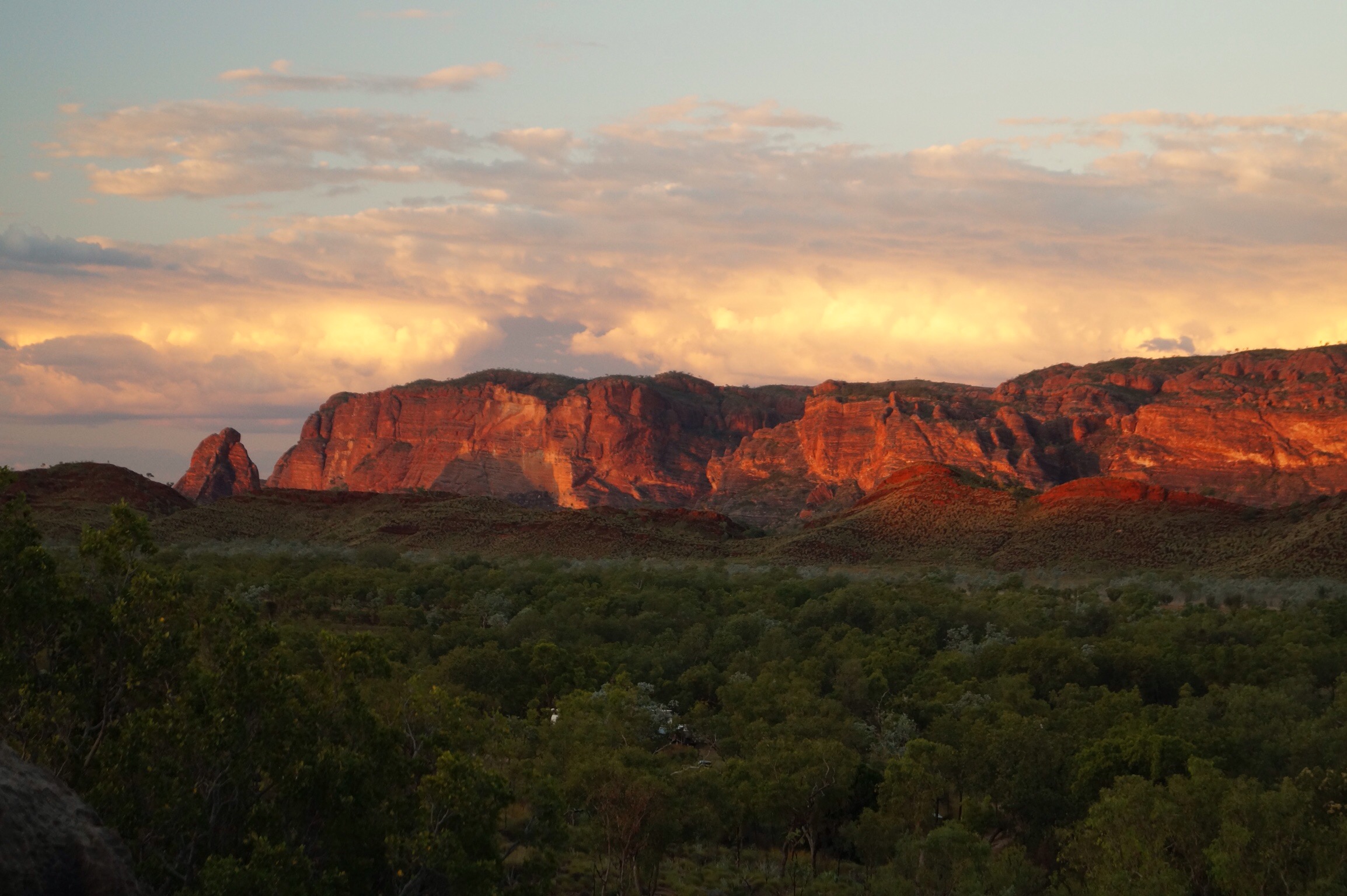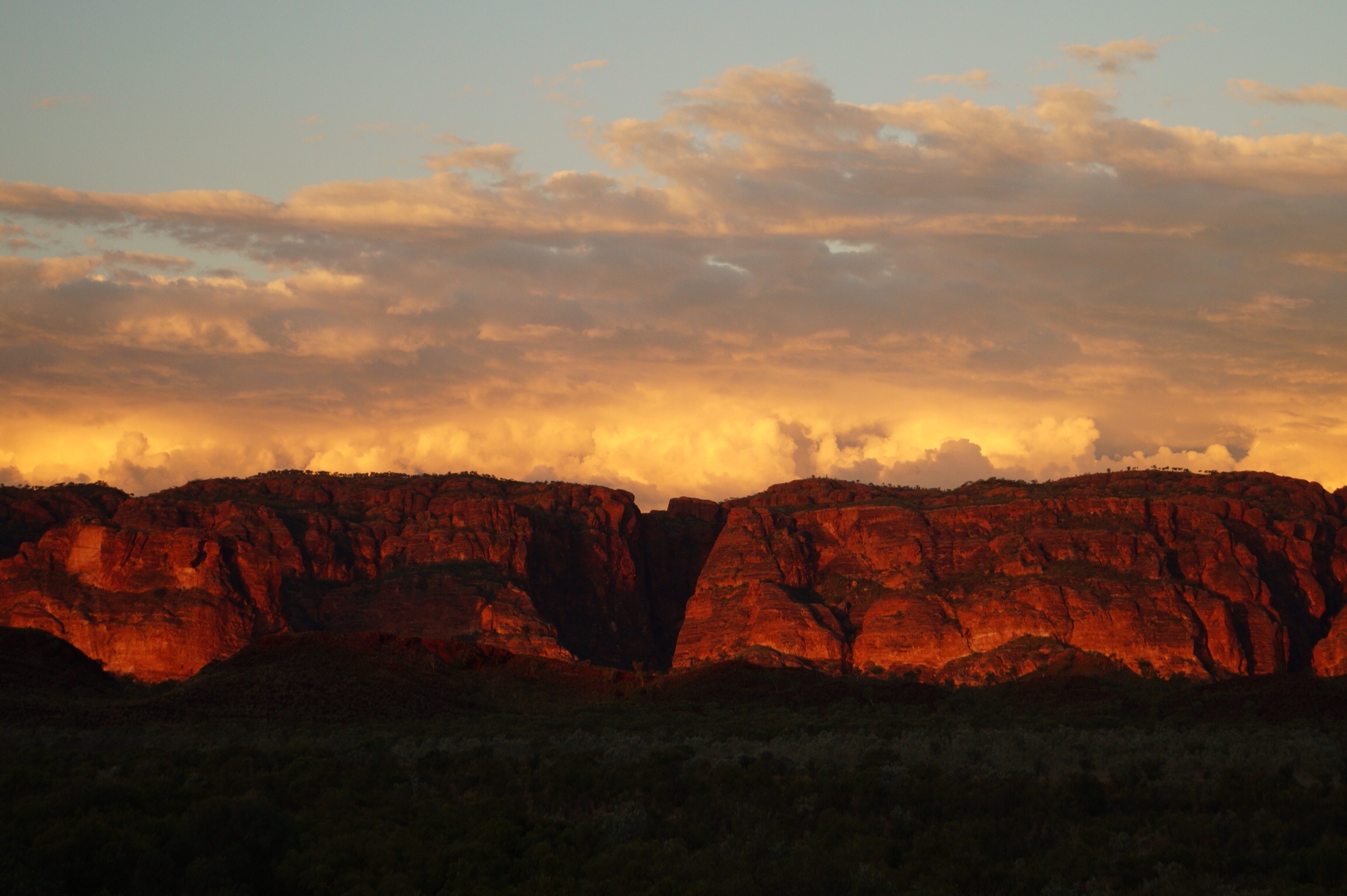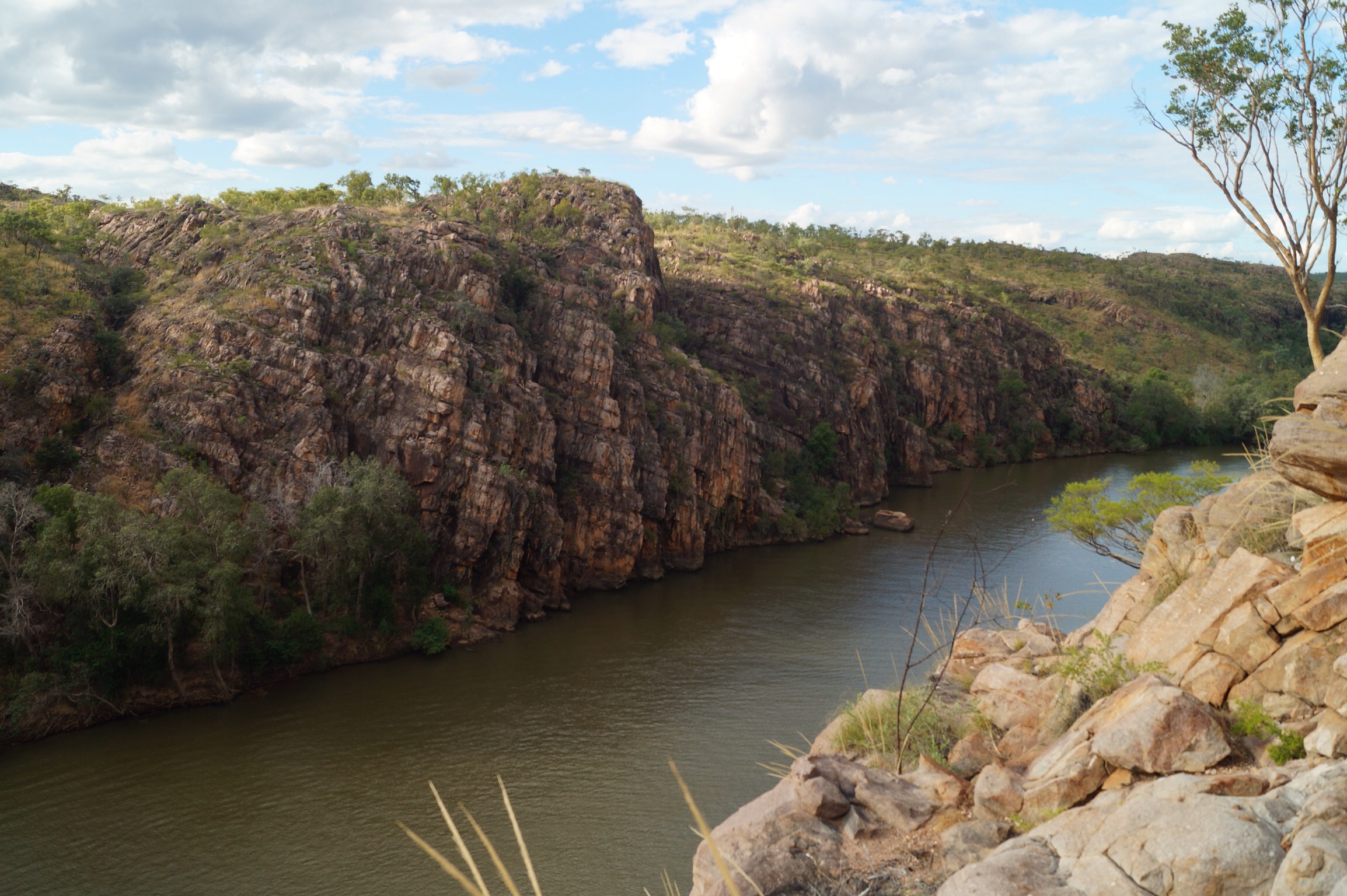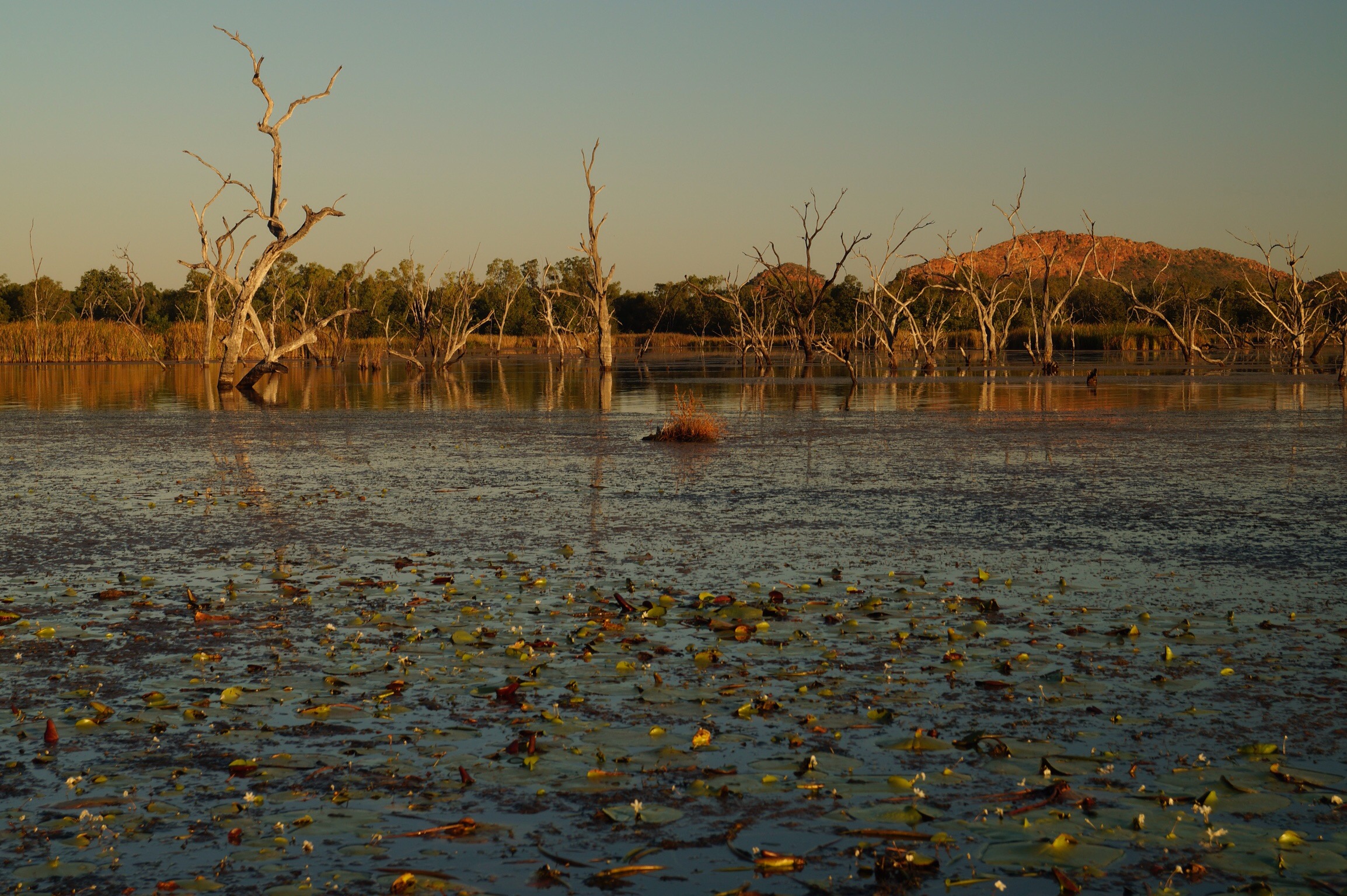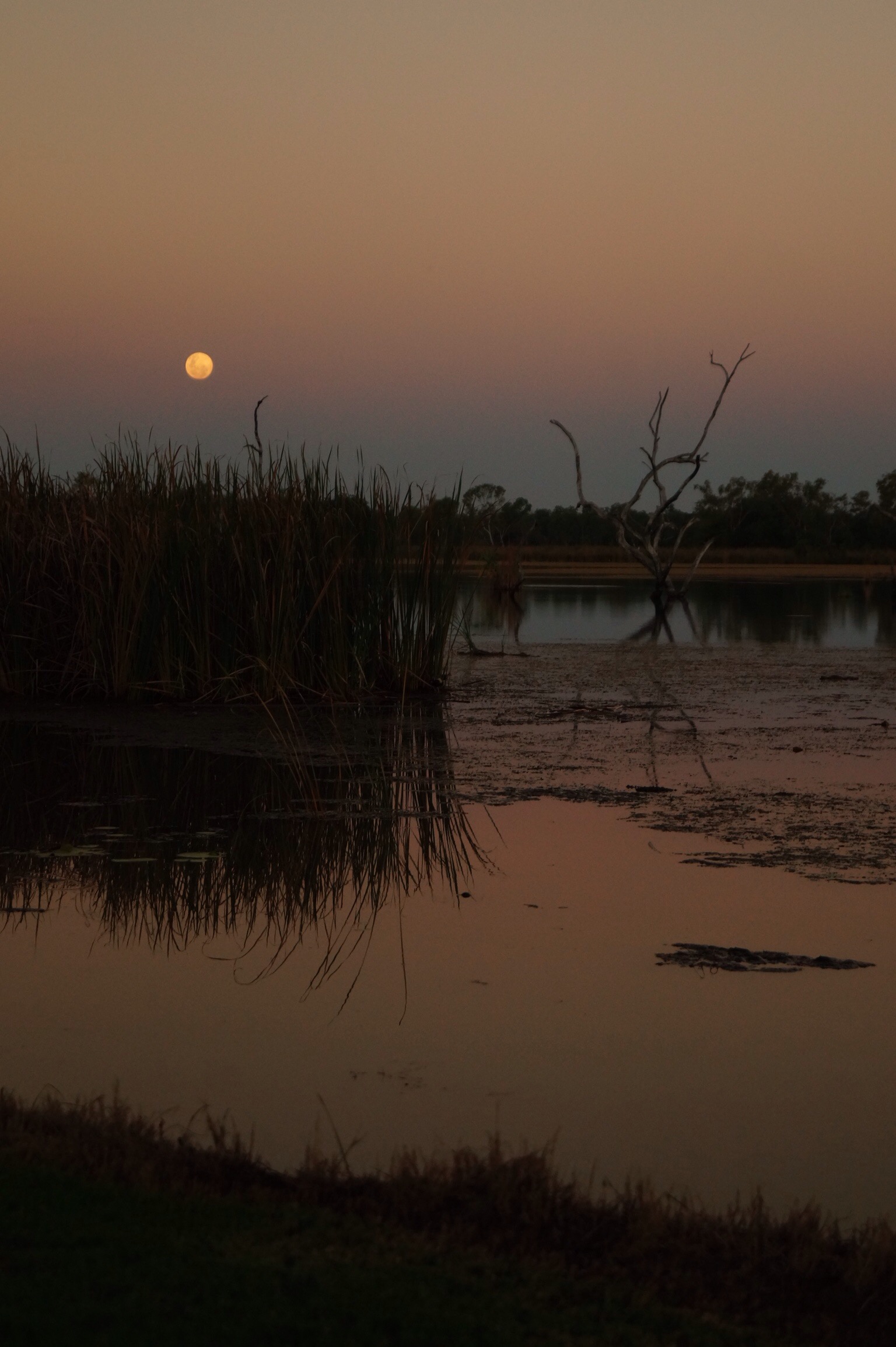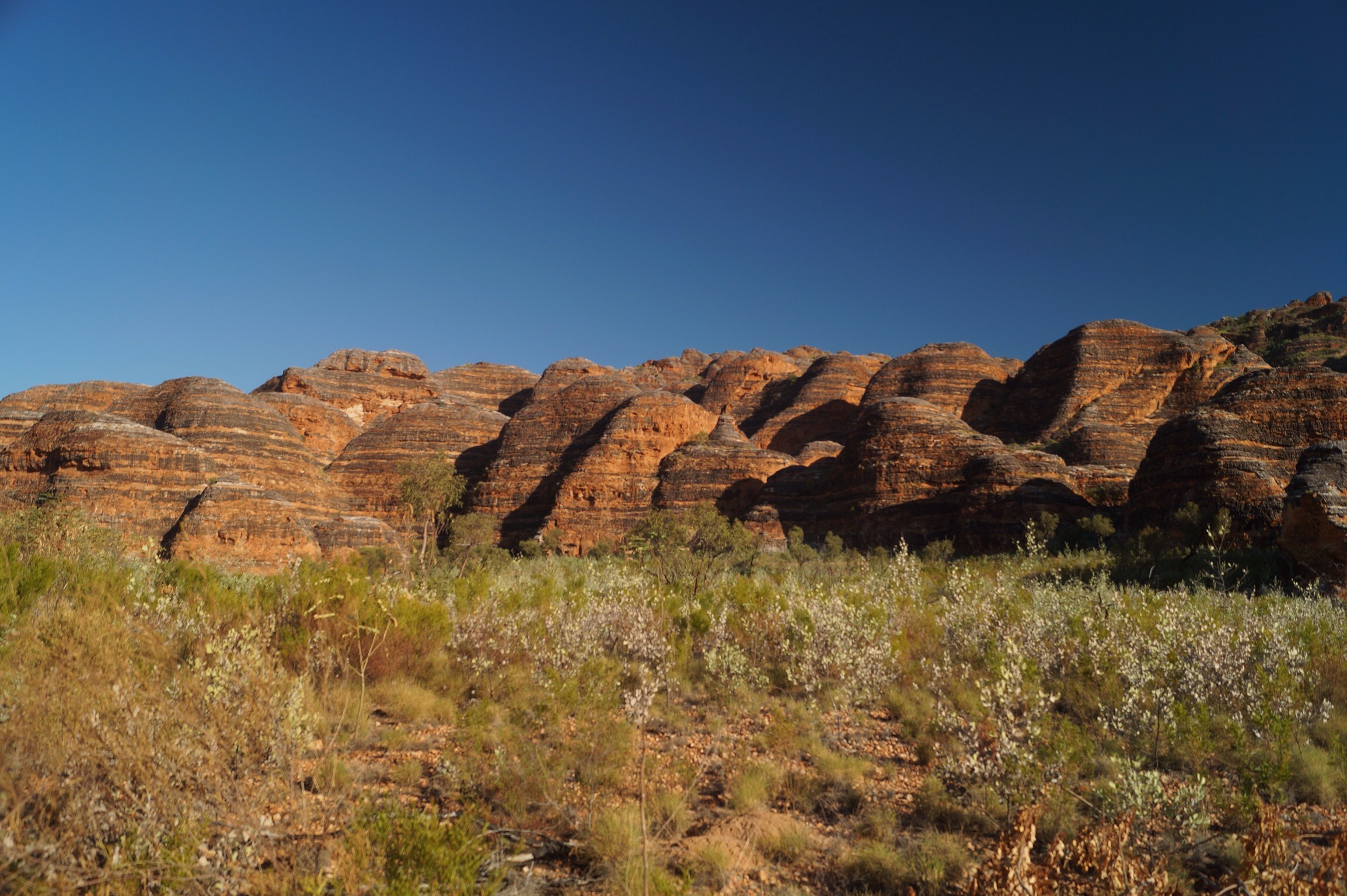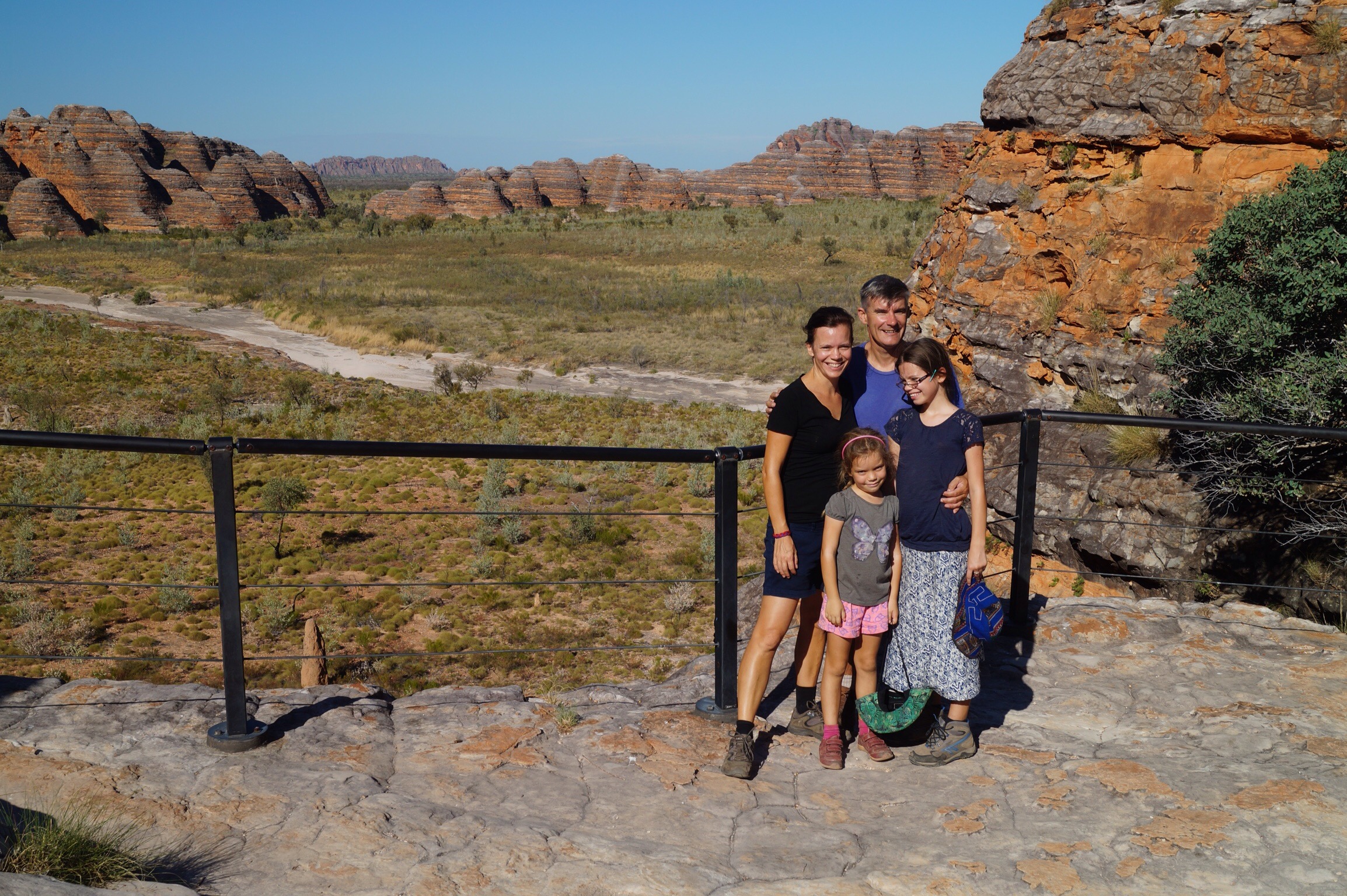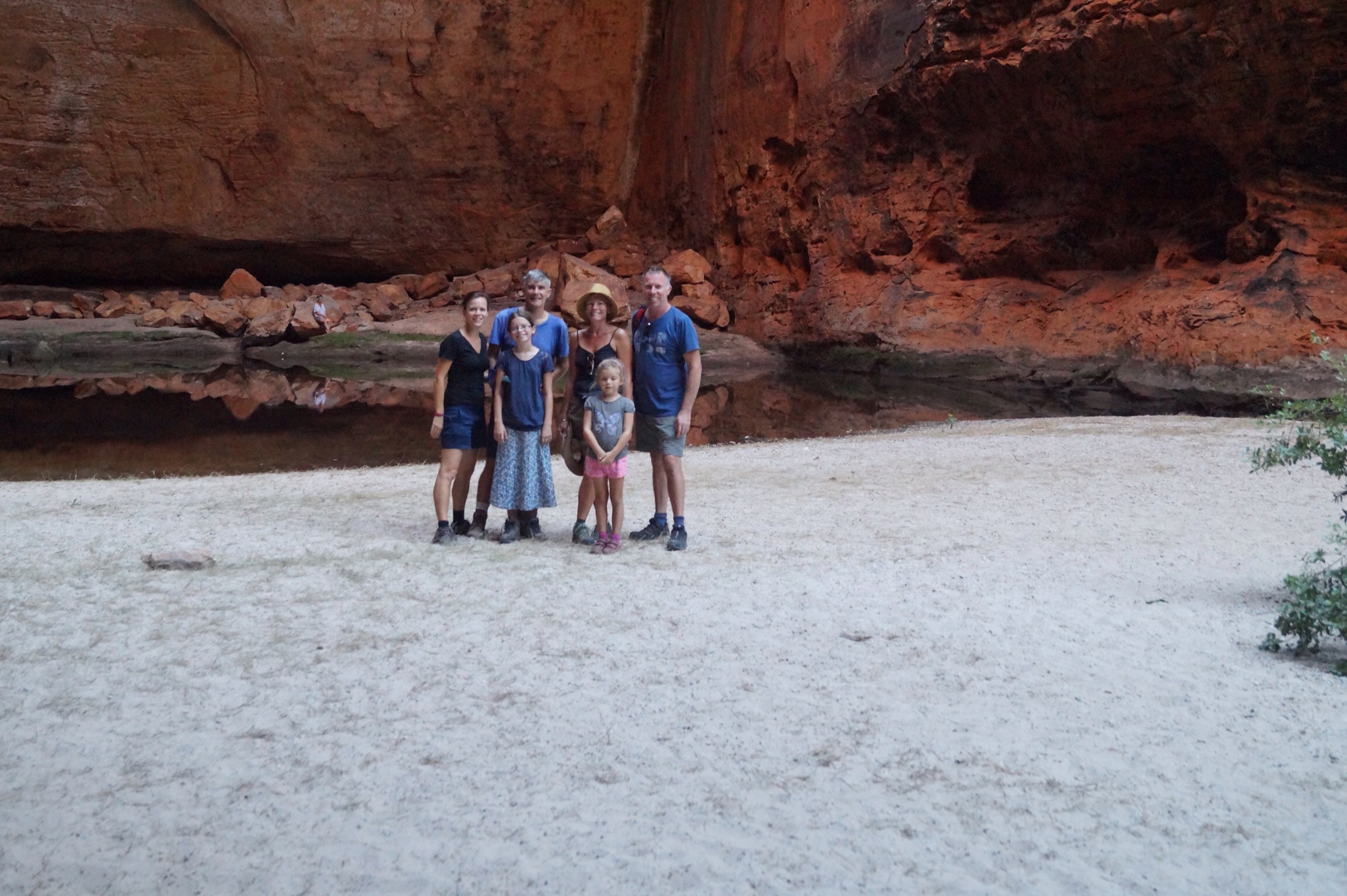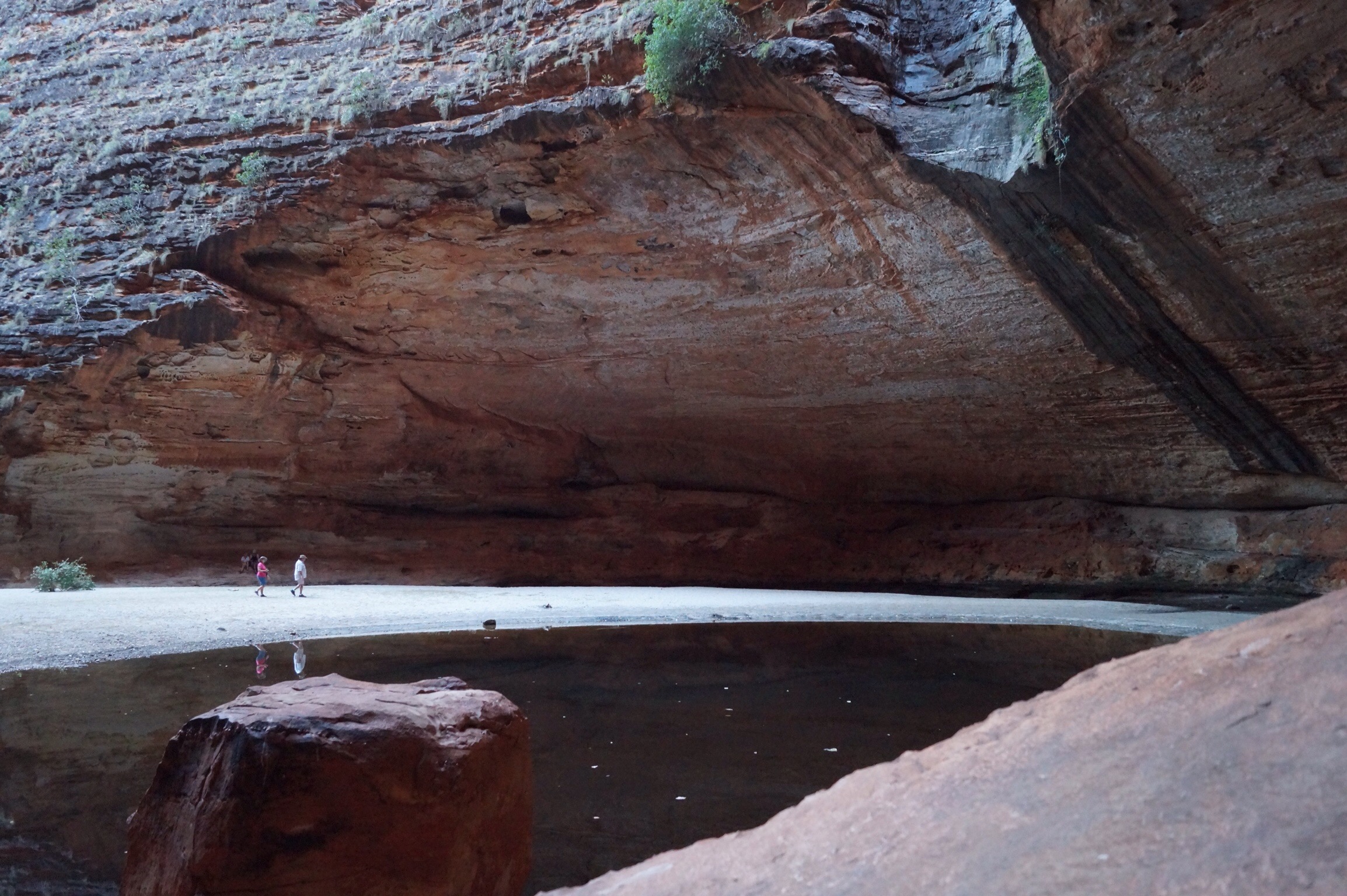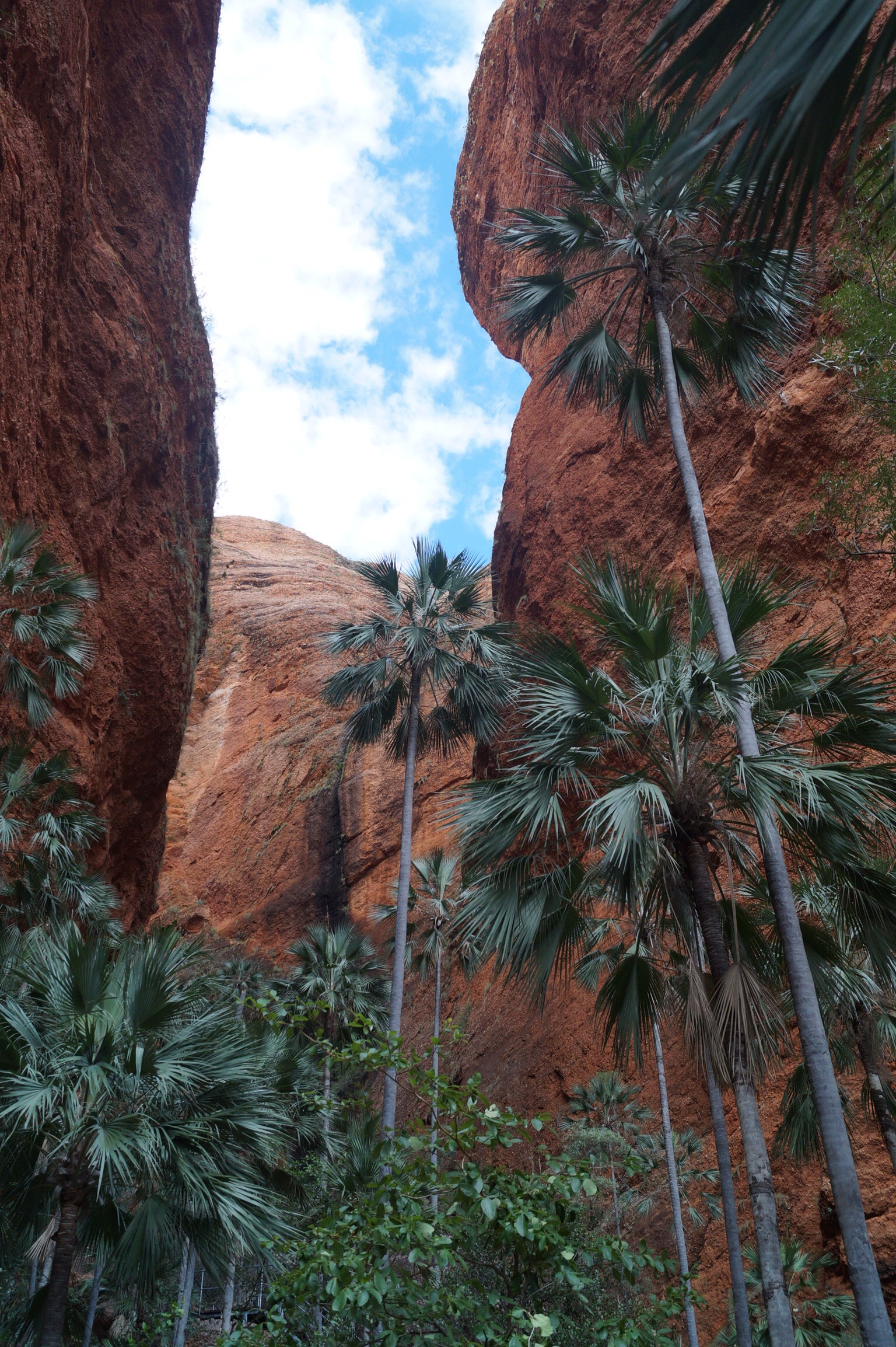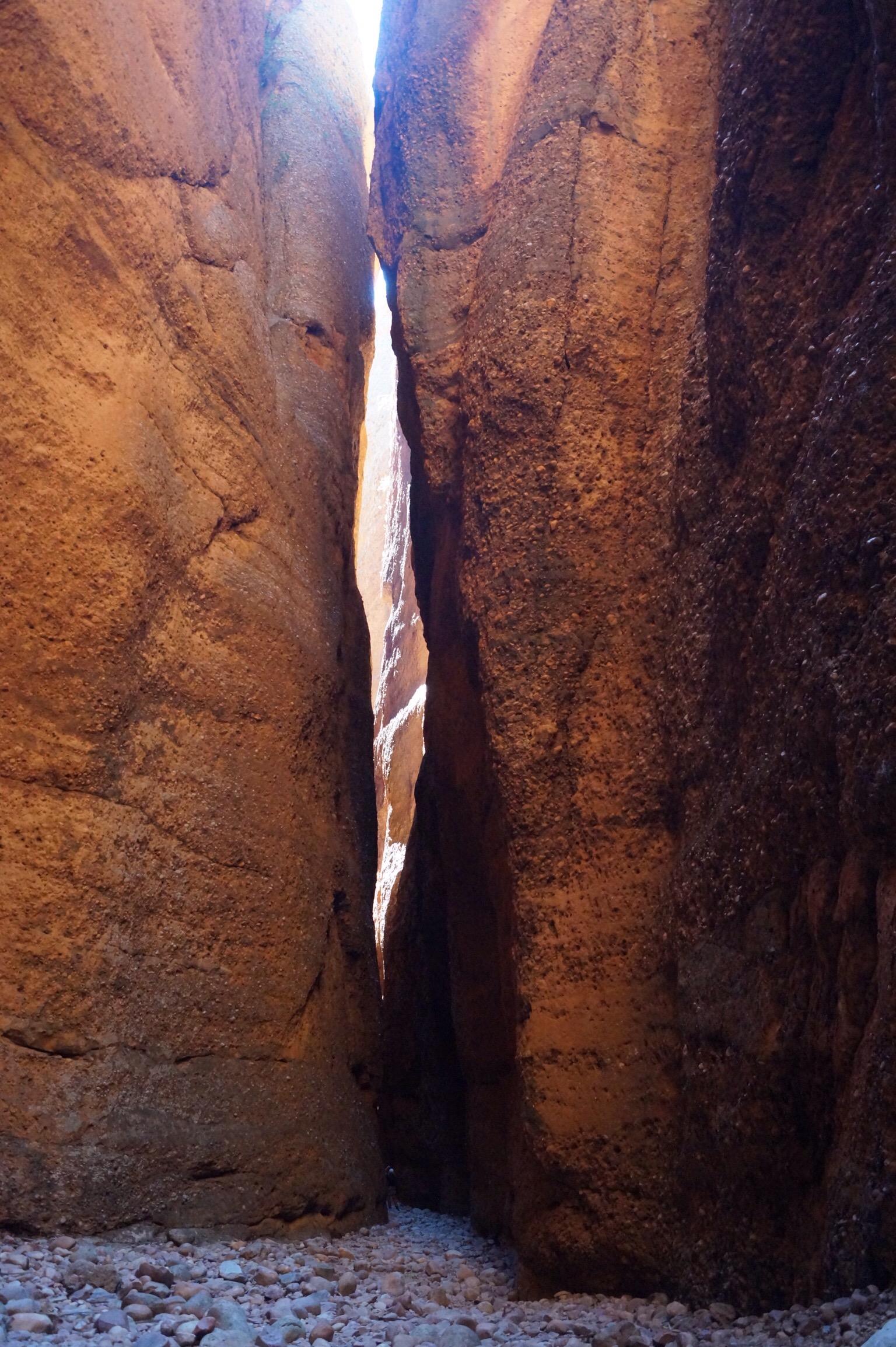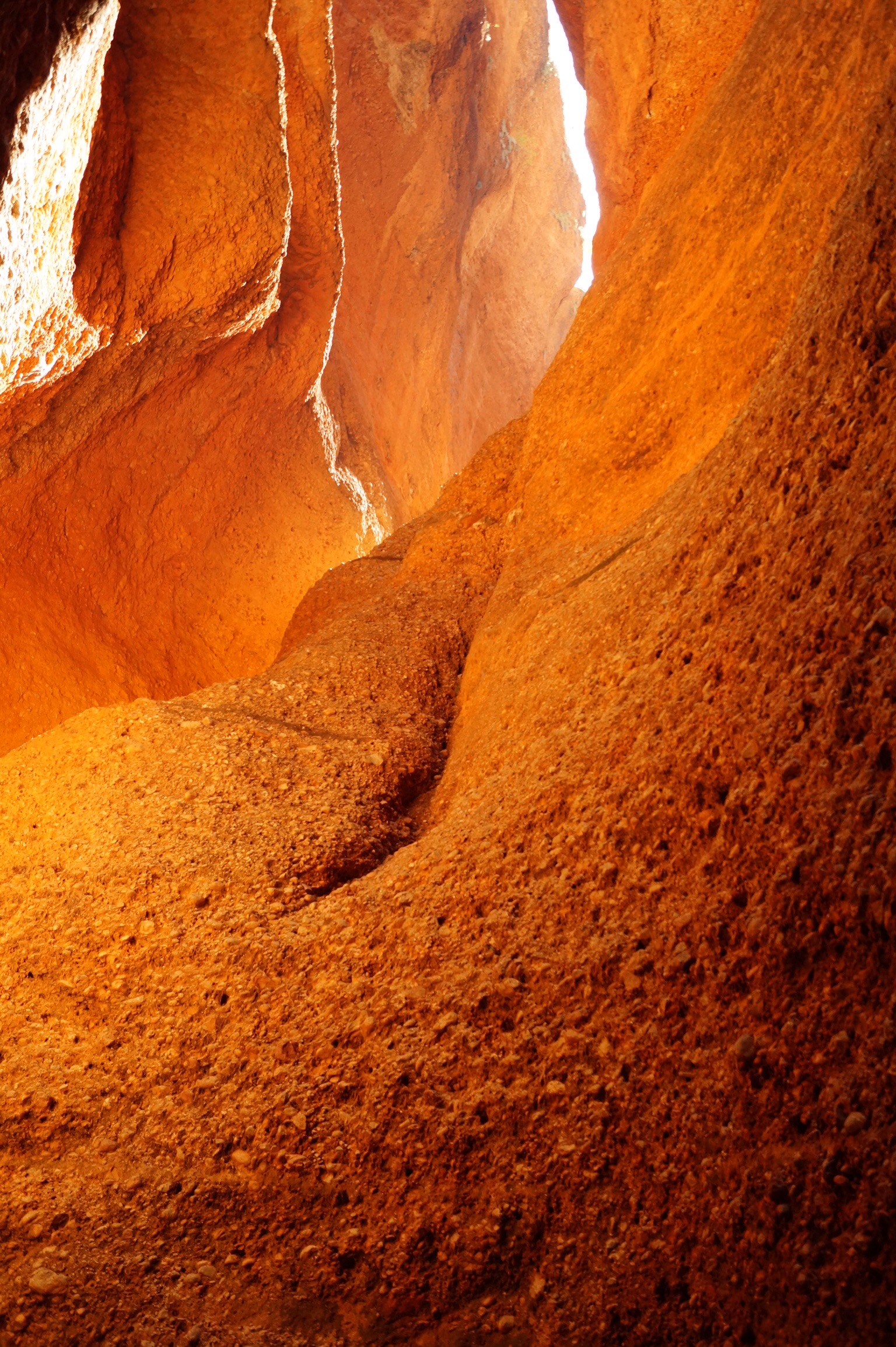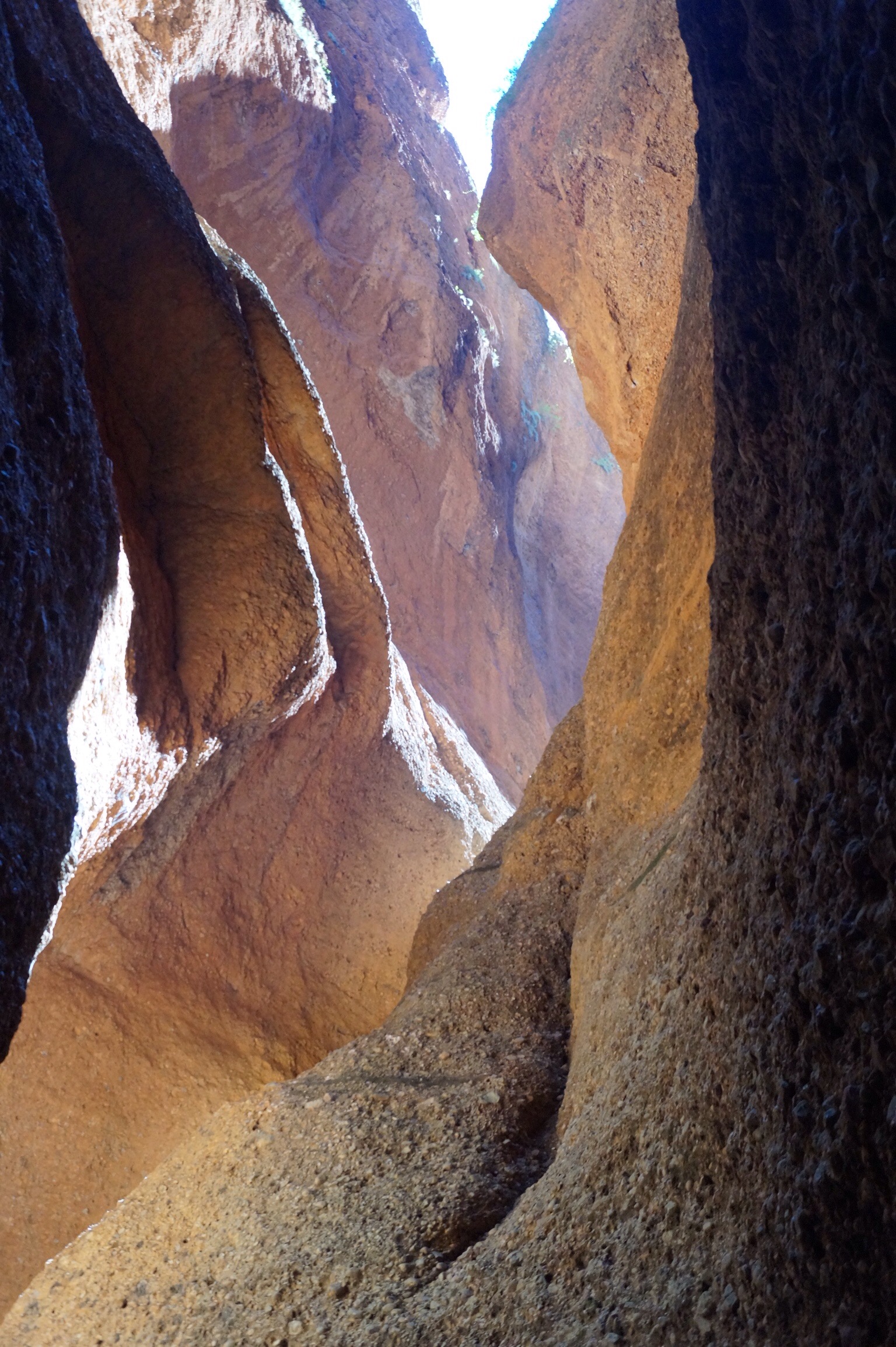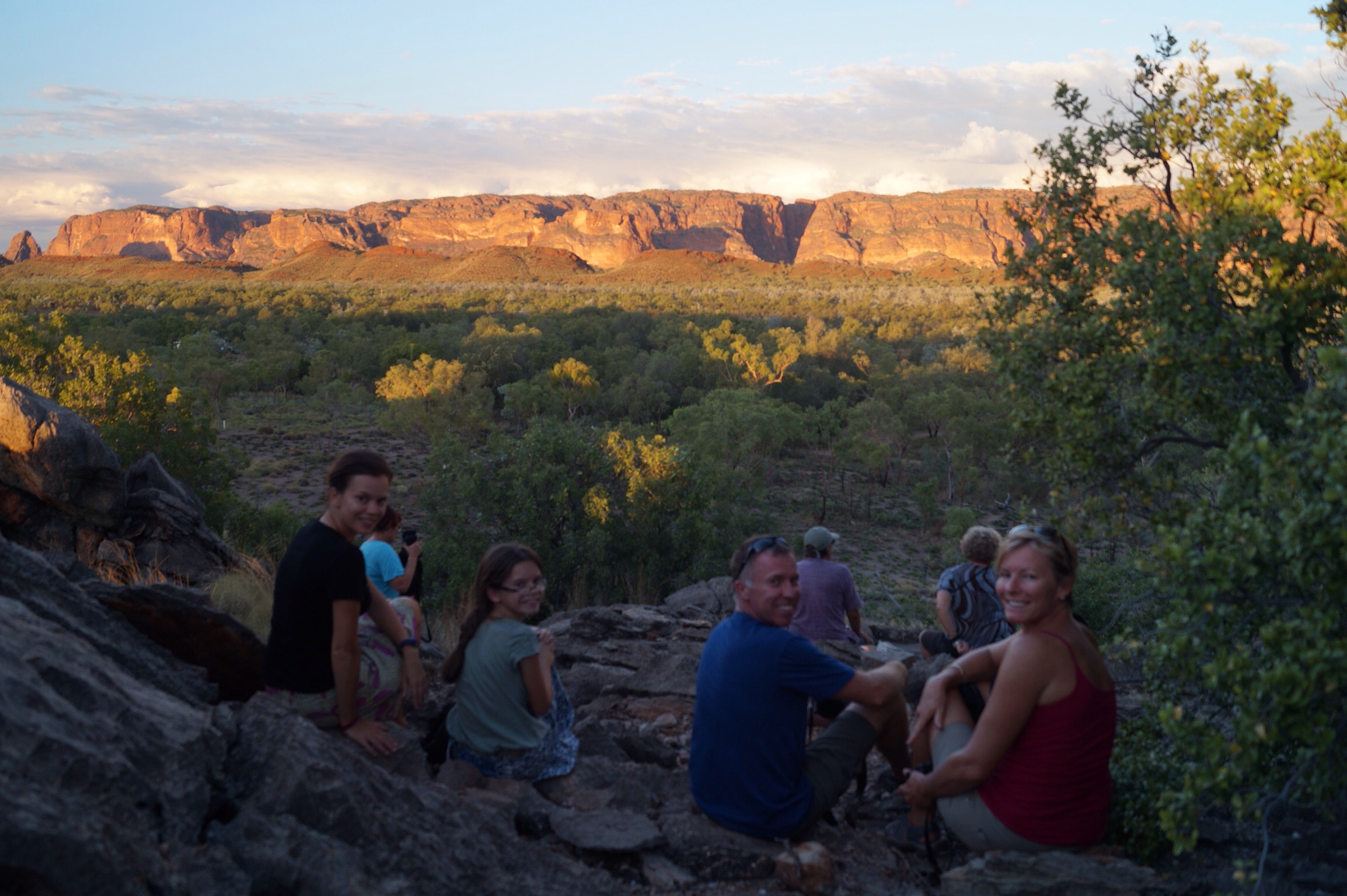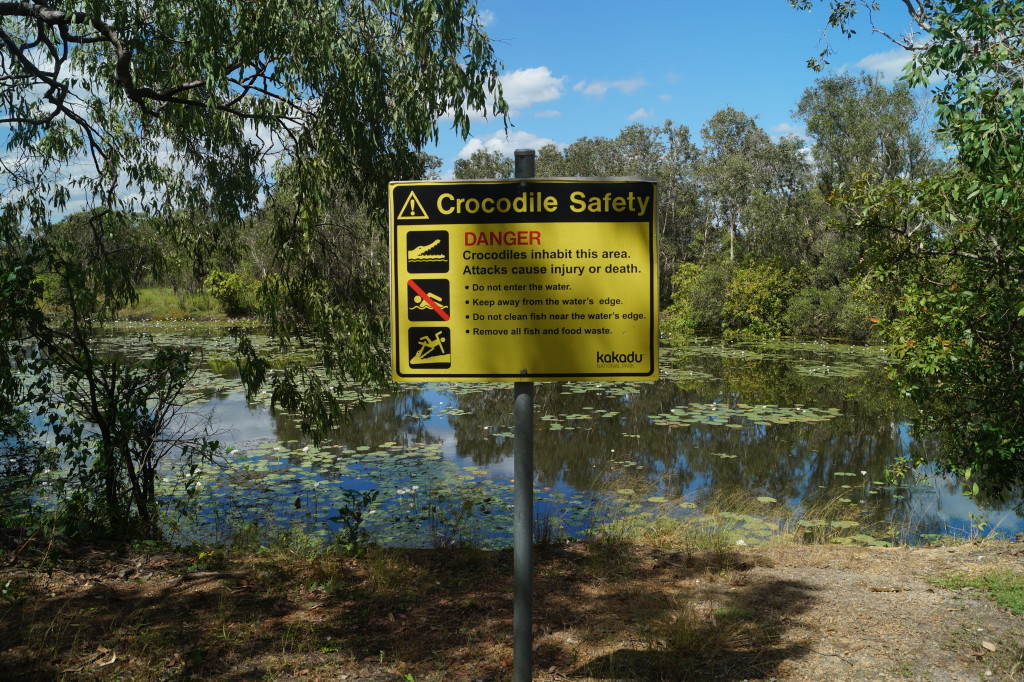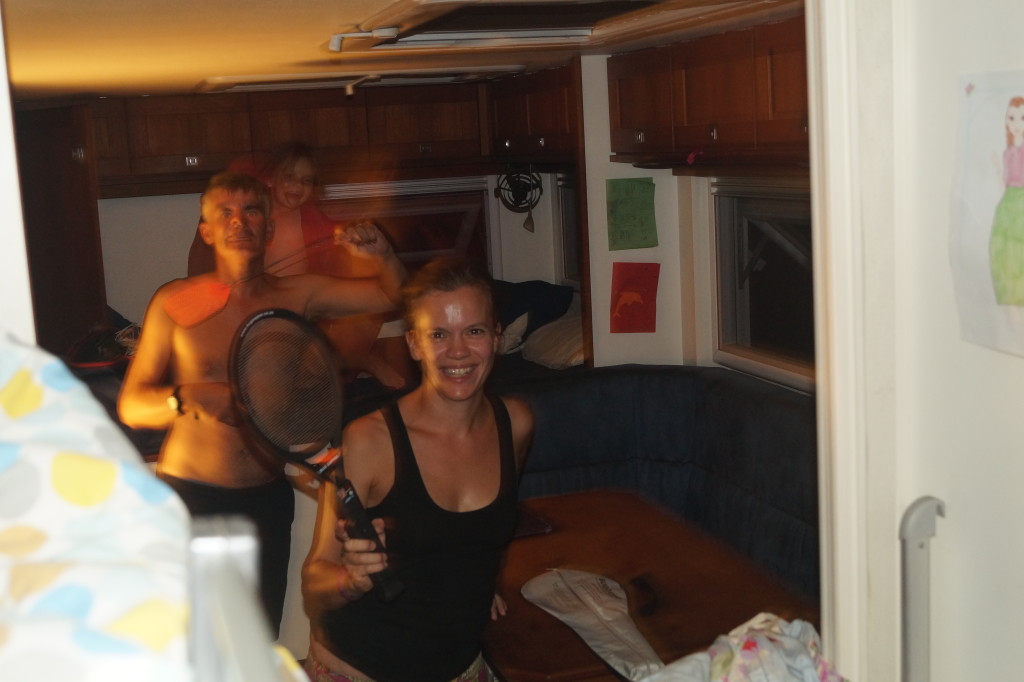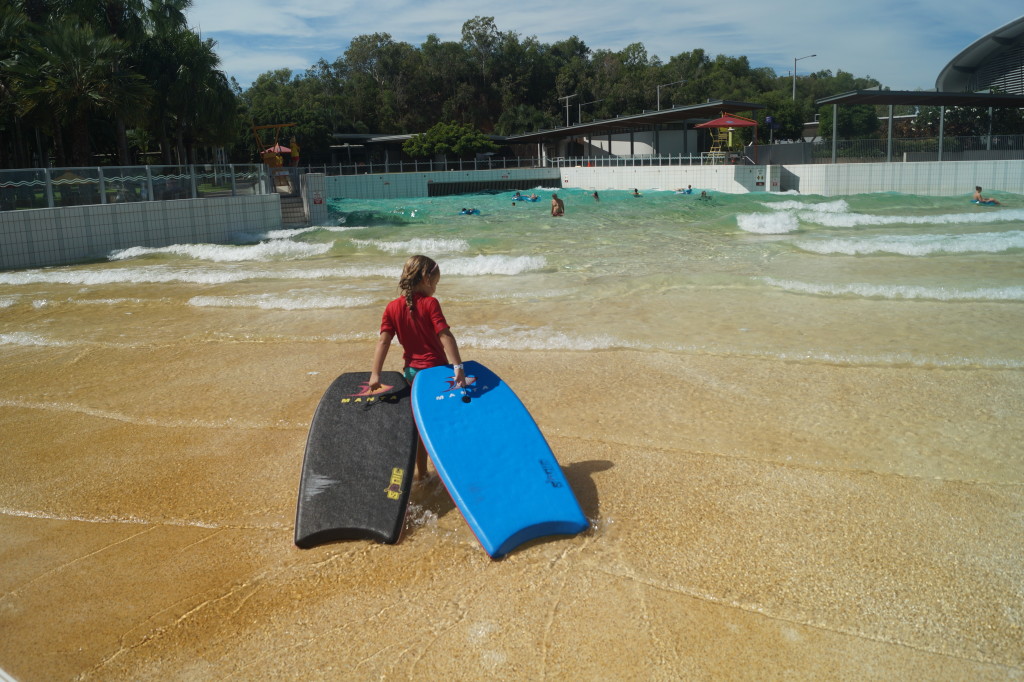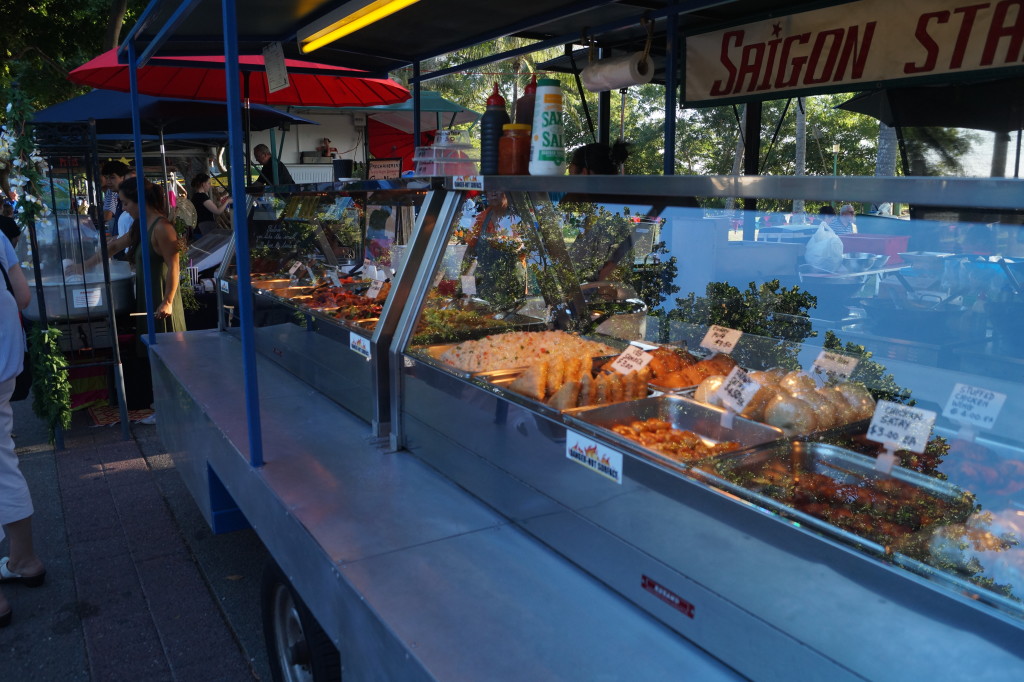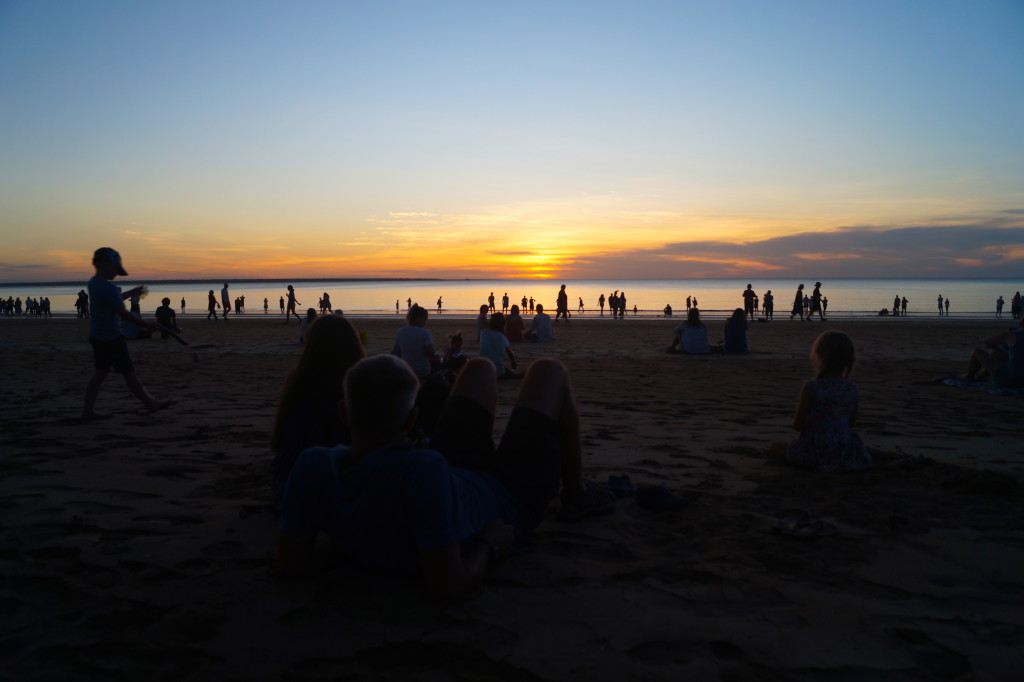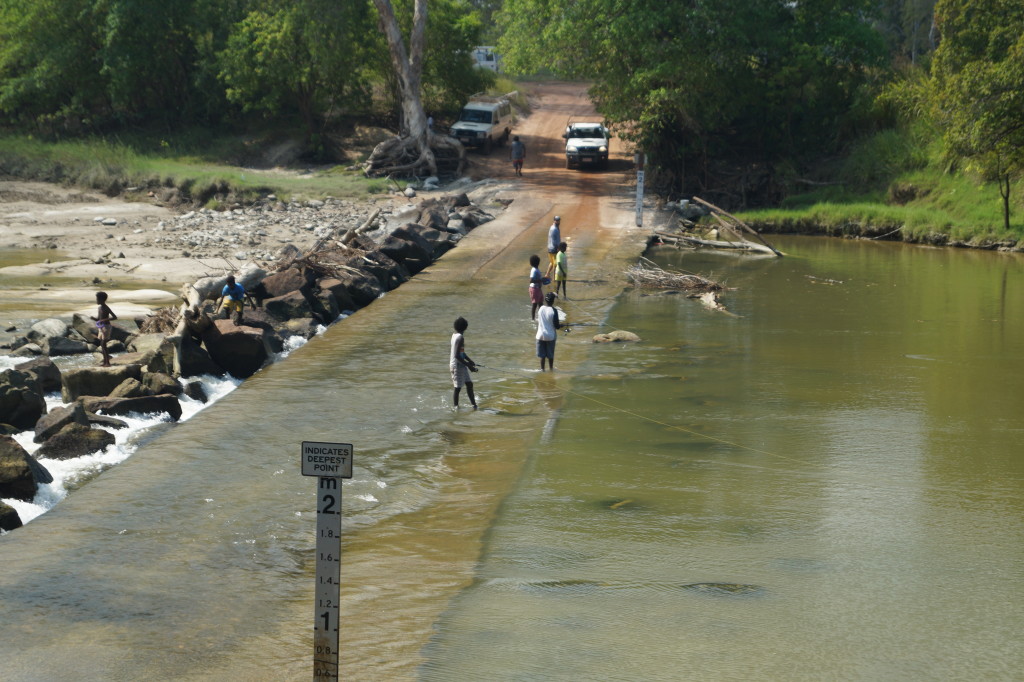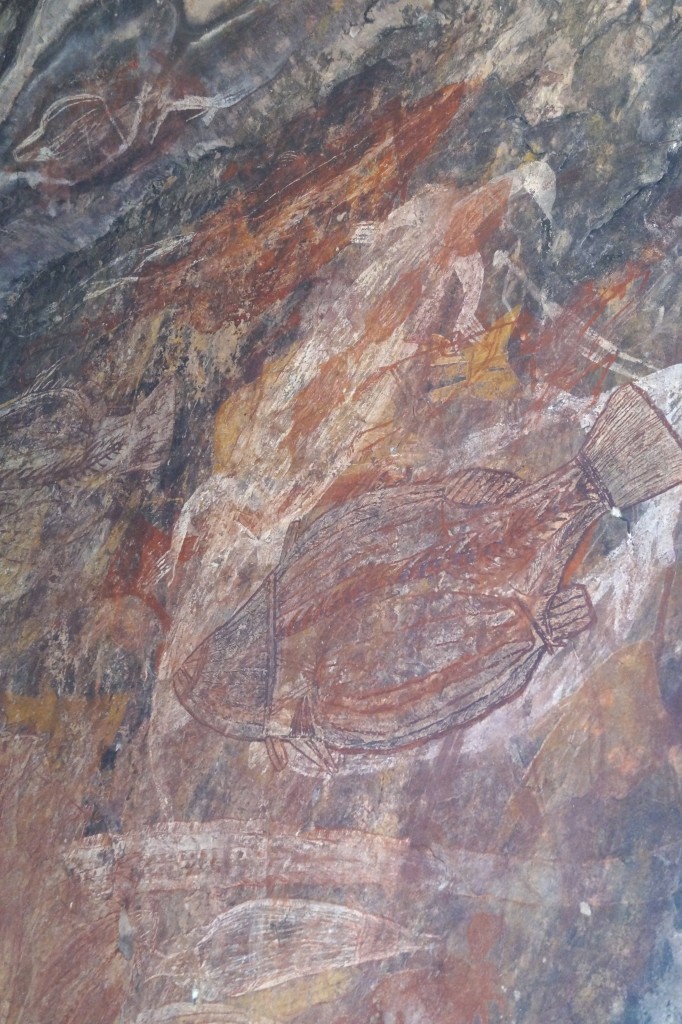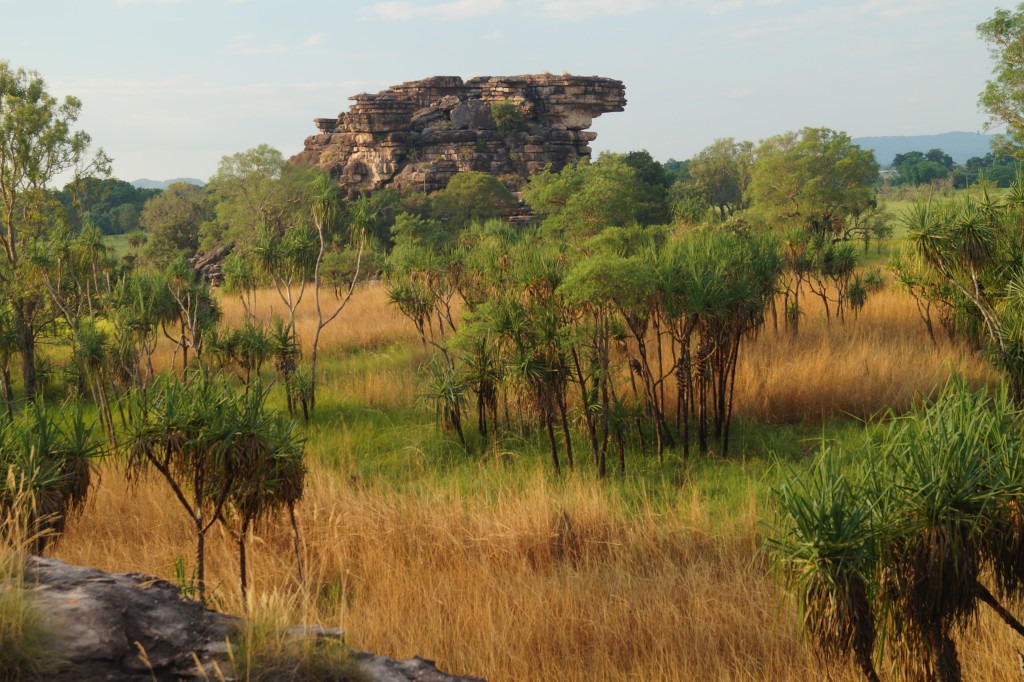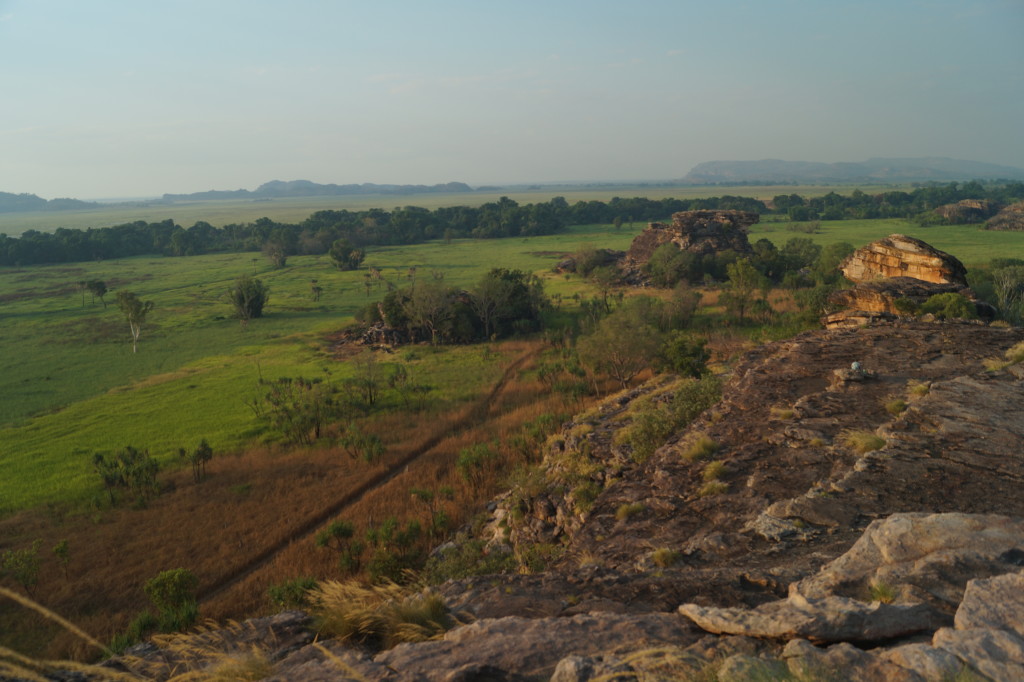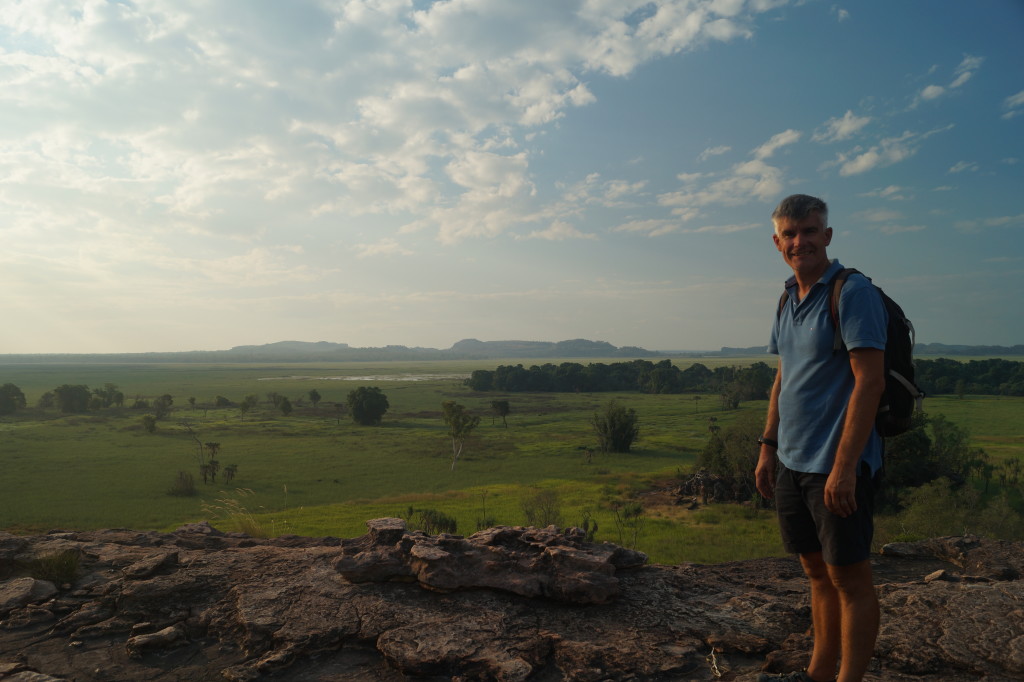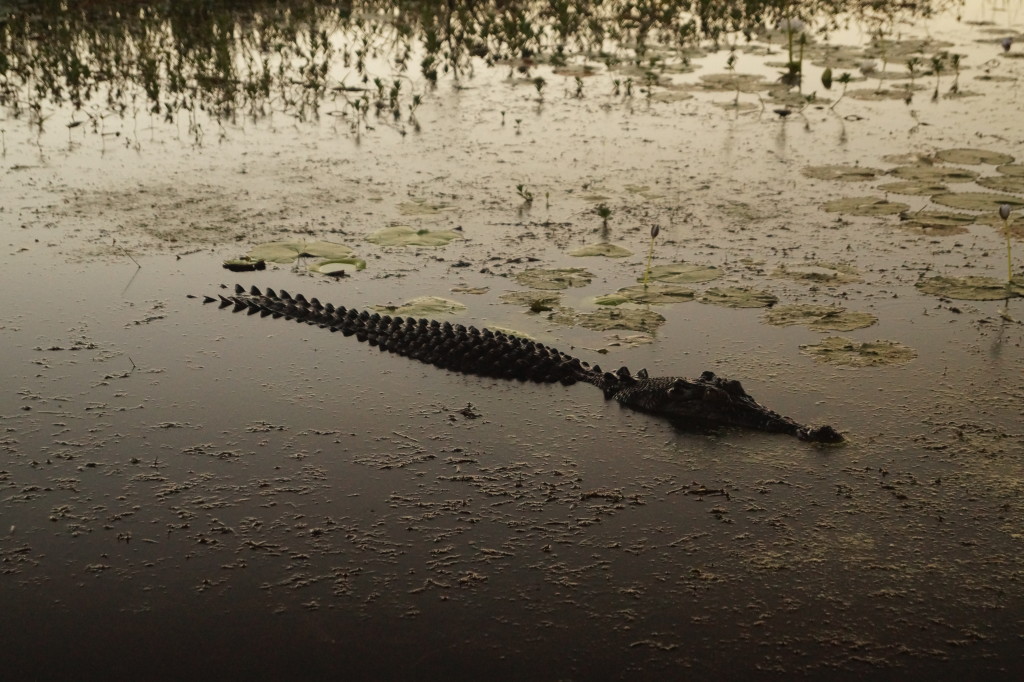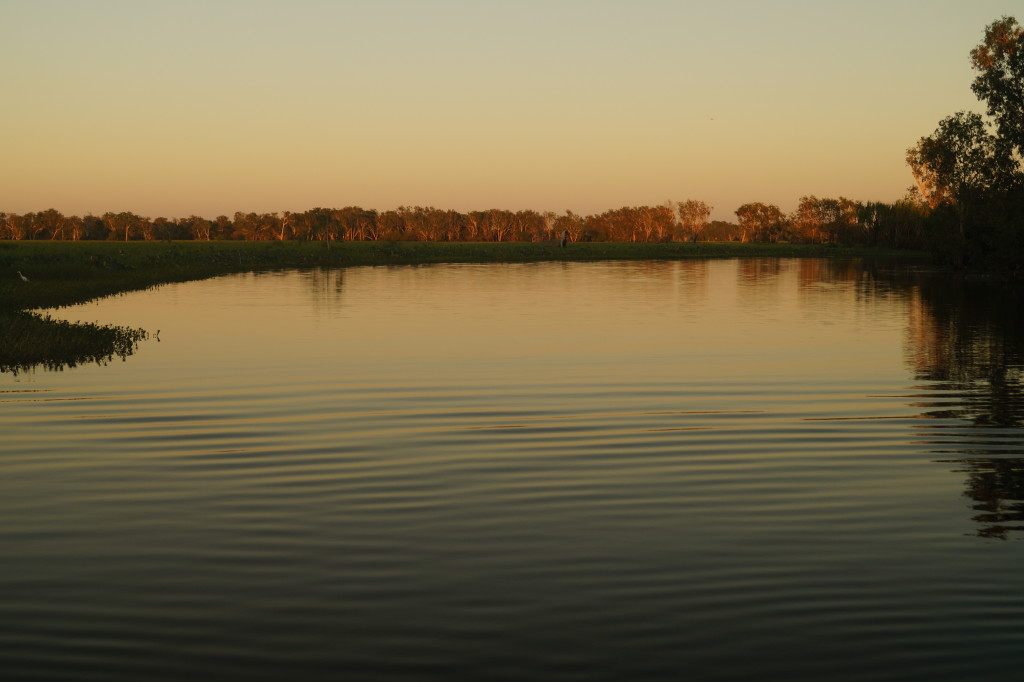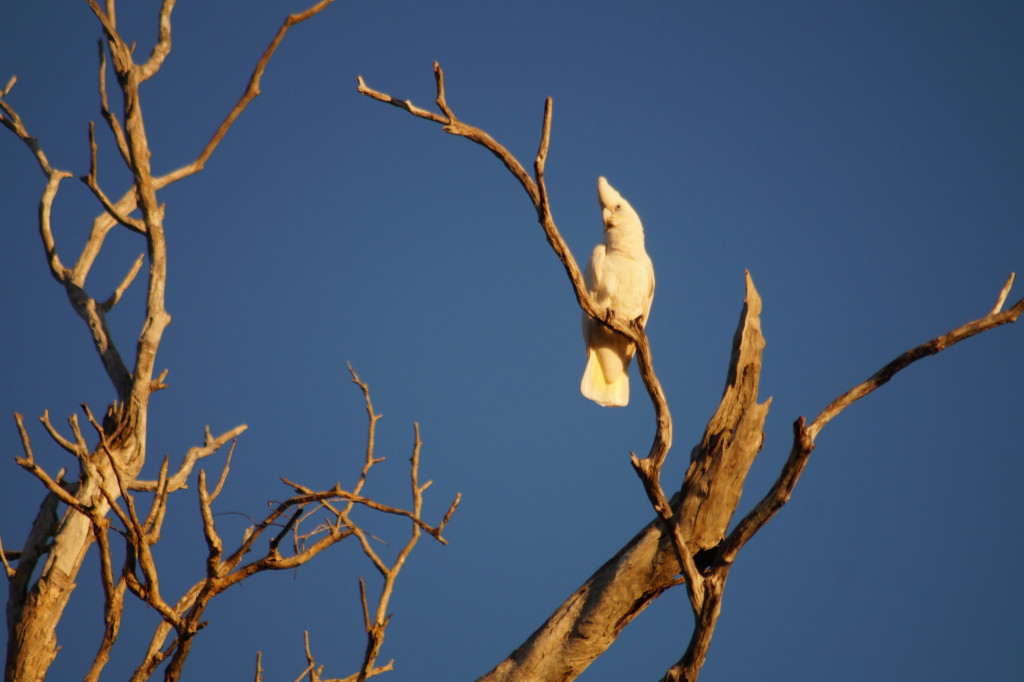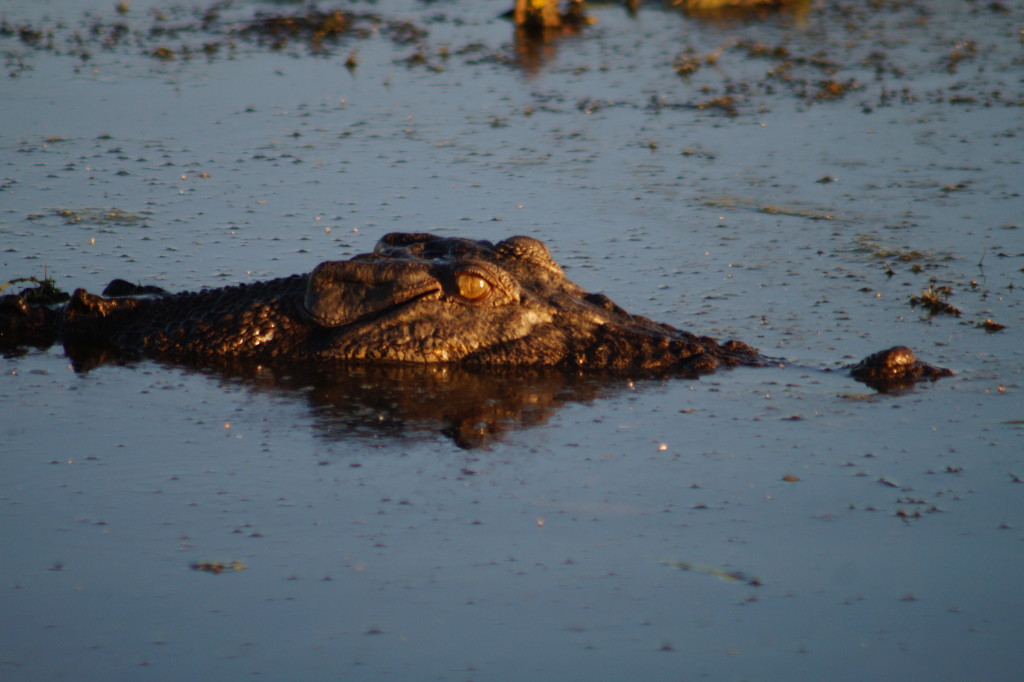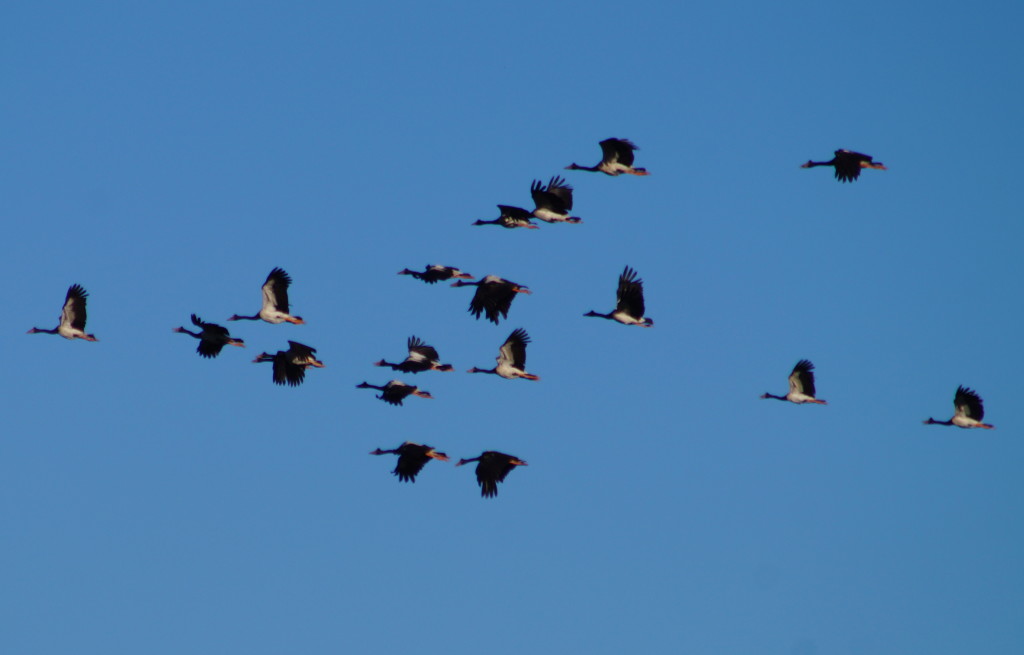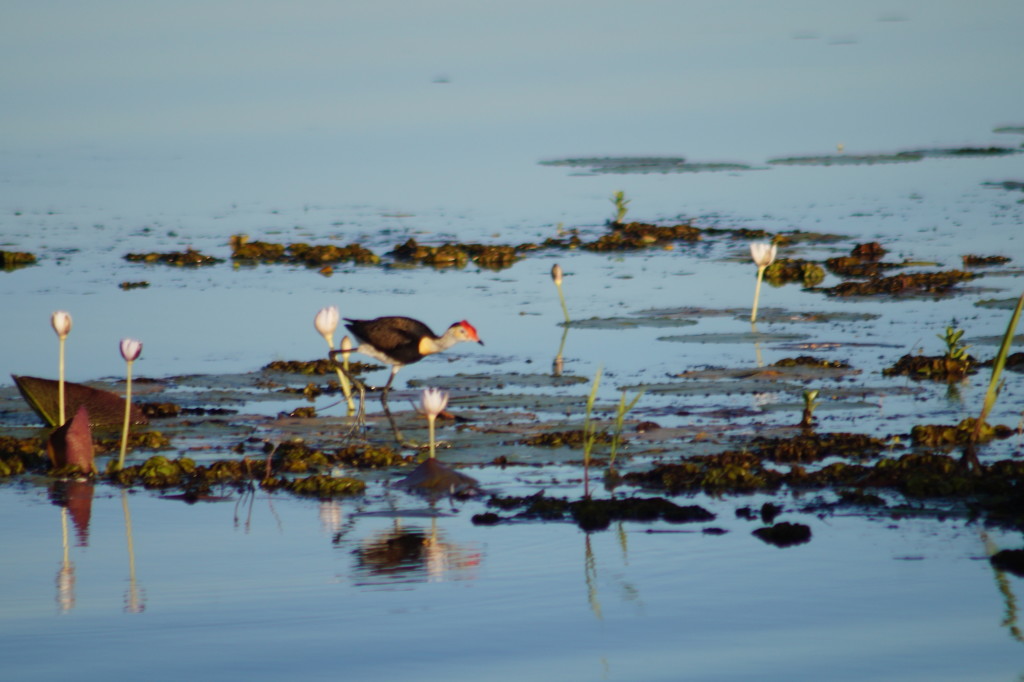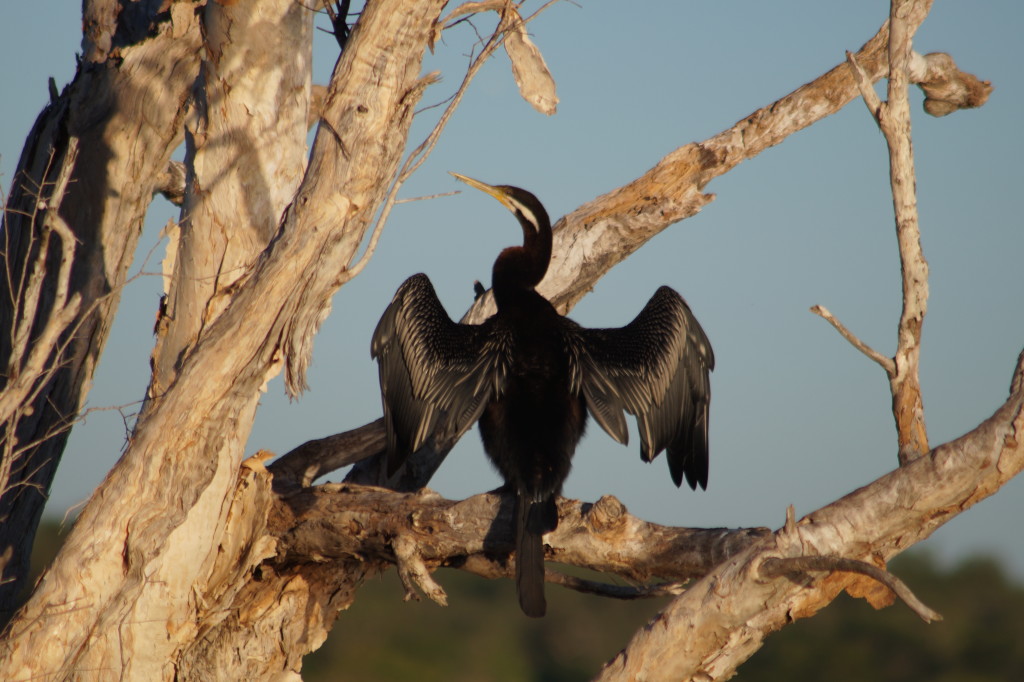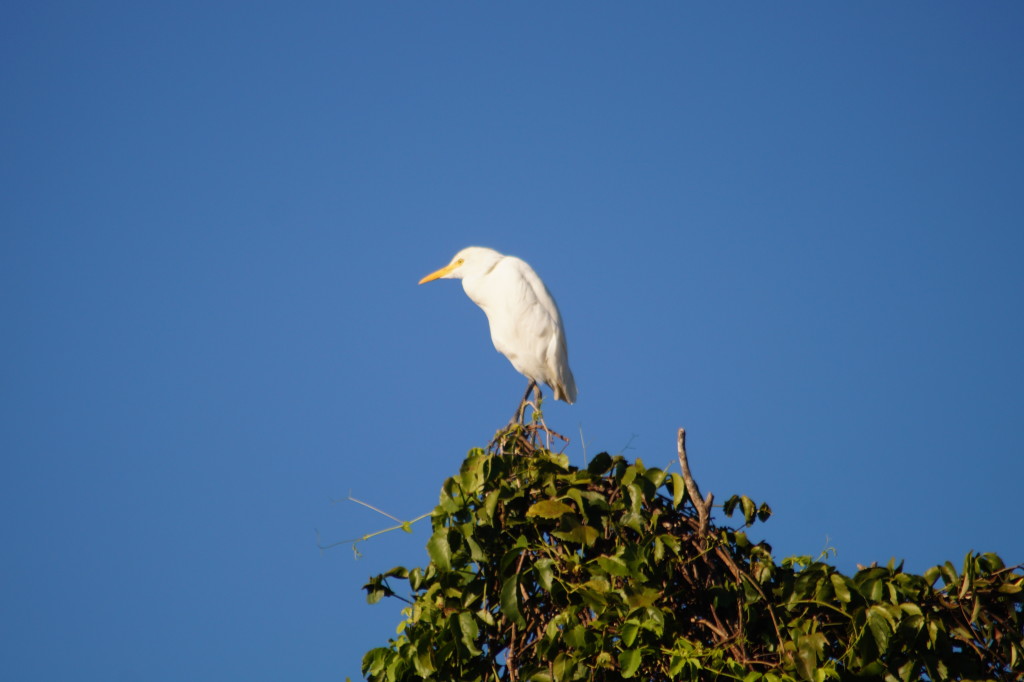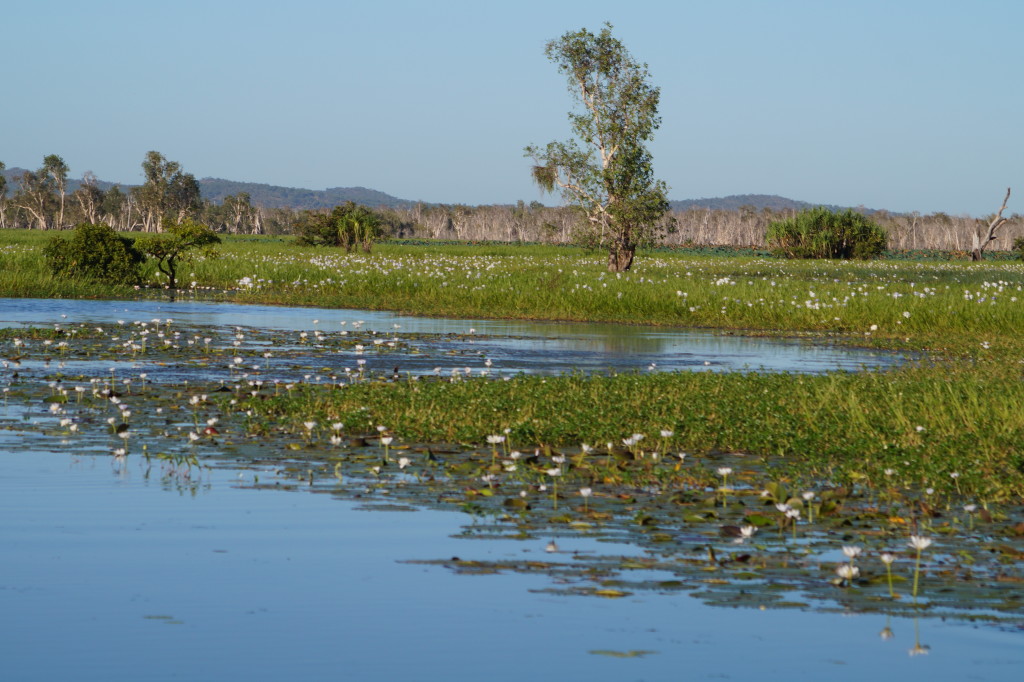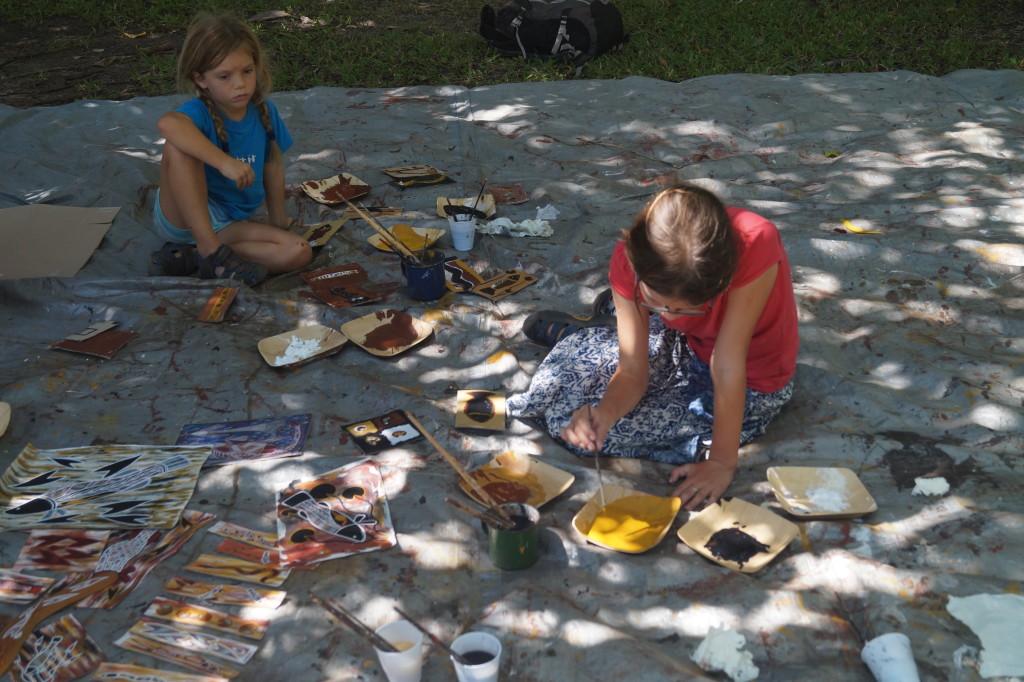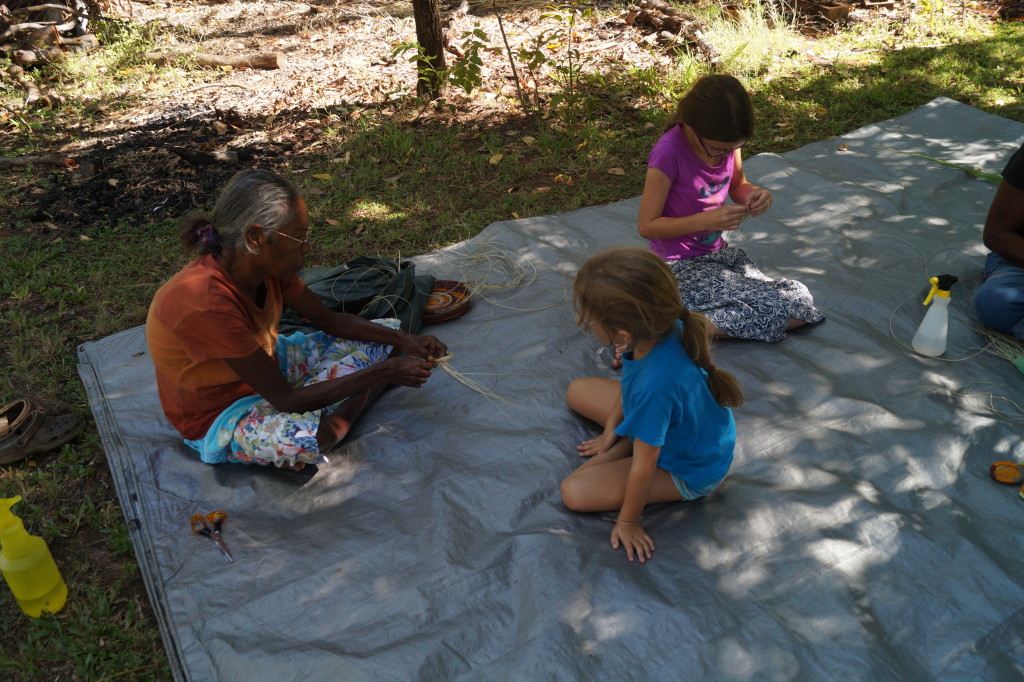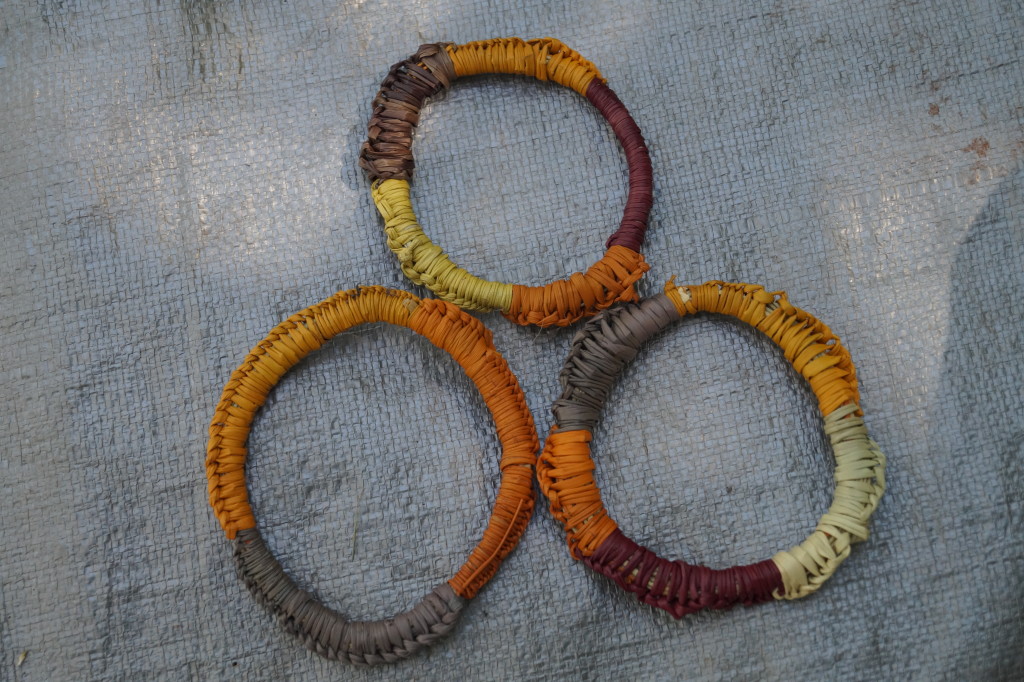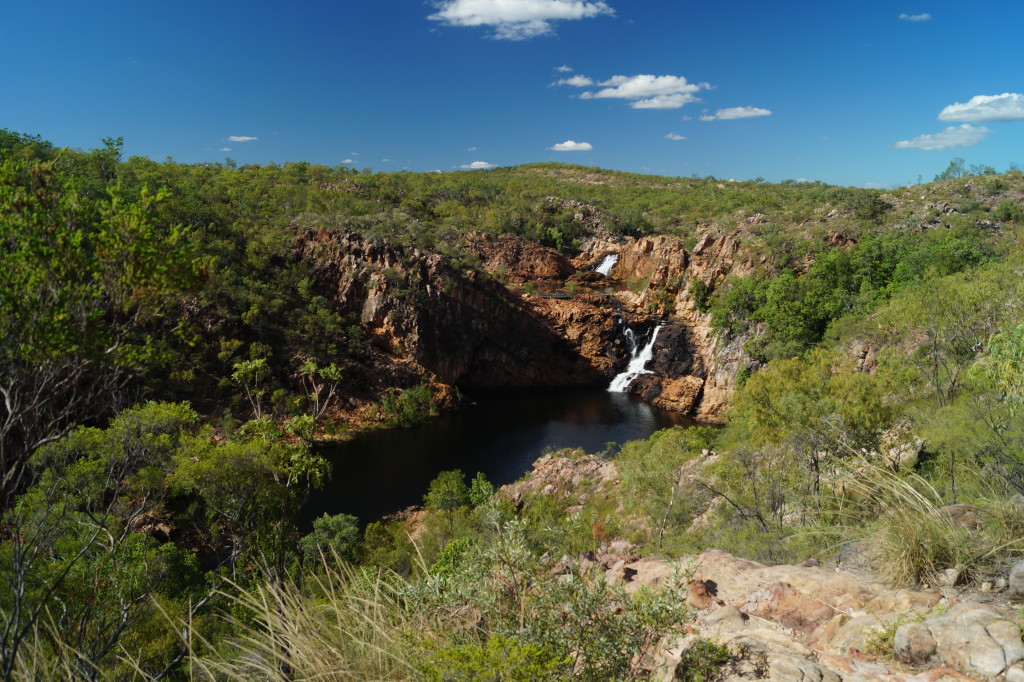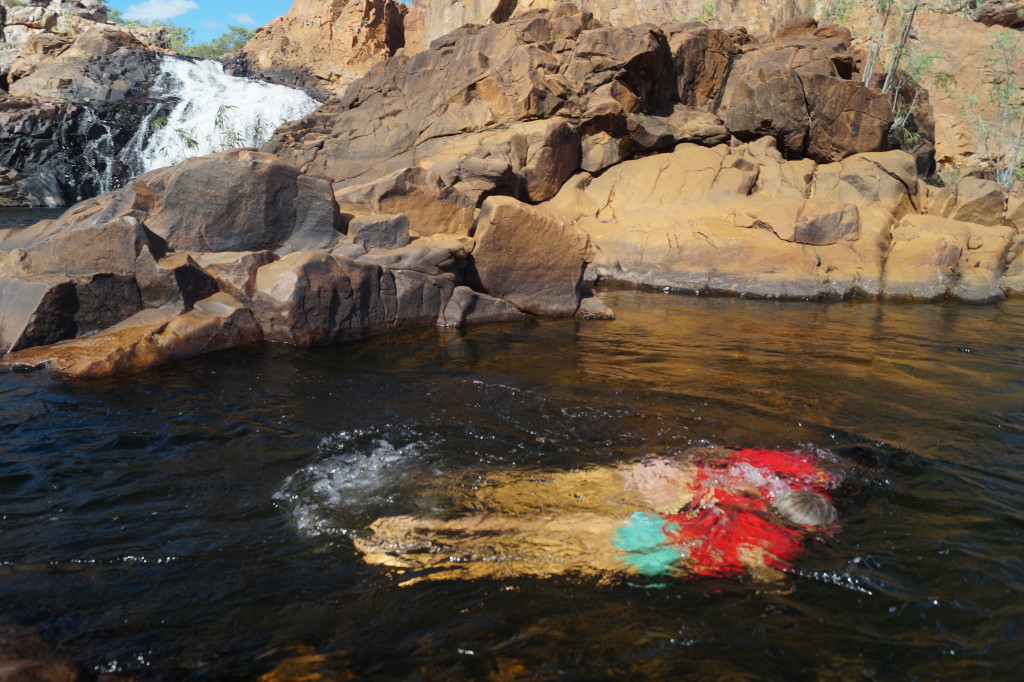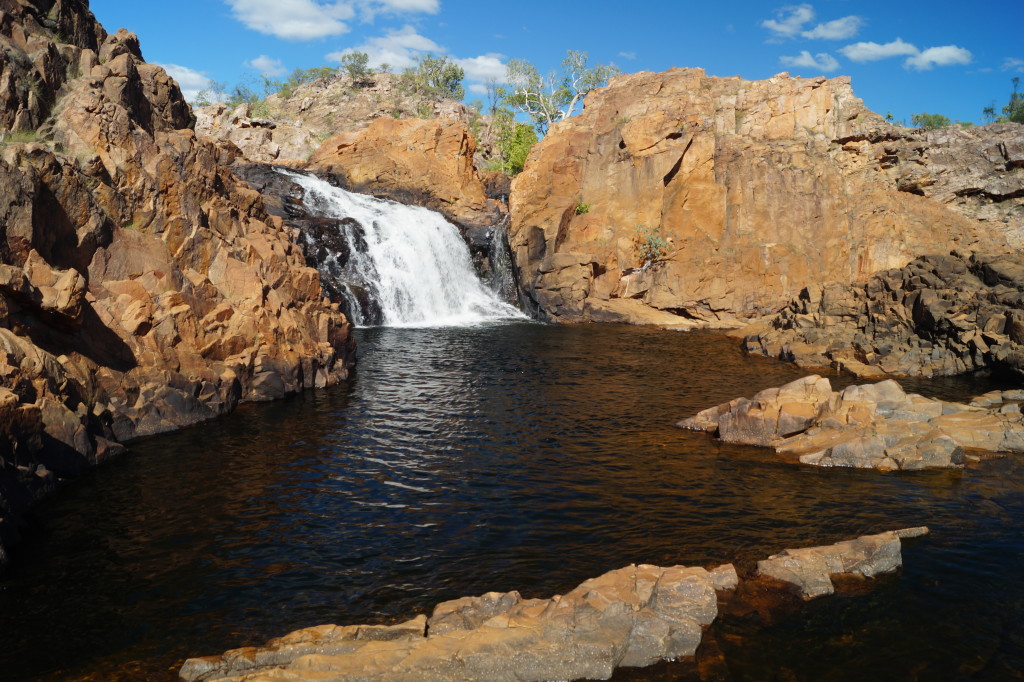There is a 660km long red dirt road stretching across some of the remotest area in Australia. The road was carved out of the bush so remote cattle stations could transport their cows from absolutely in the middle of nowhere to......somewhere else only slightly less in the middle of nowhere. The road is only reliably open for, at best, 6 months of the year as the Wet season is very wet. Much of it is corrugated; there are some filthy rocky sections and there are lots of creek crossings.
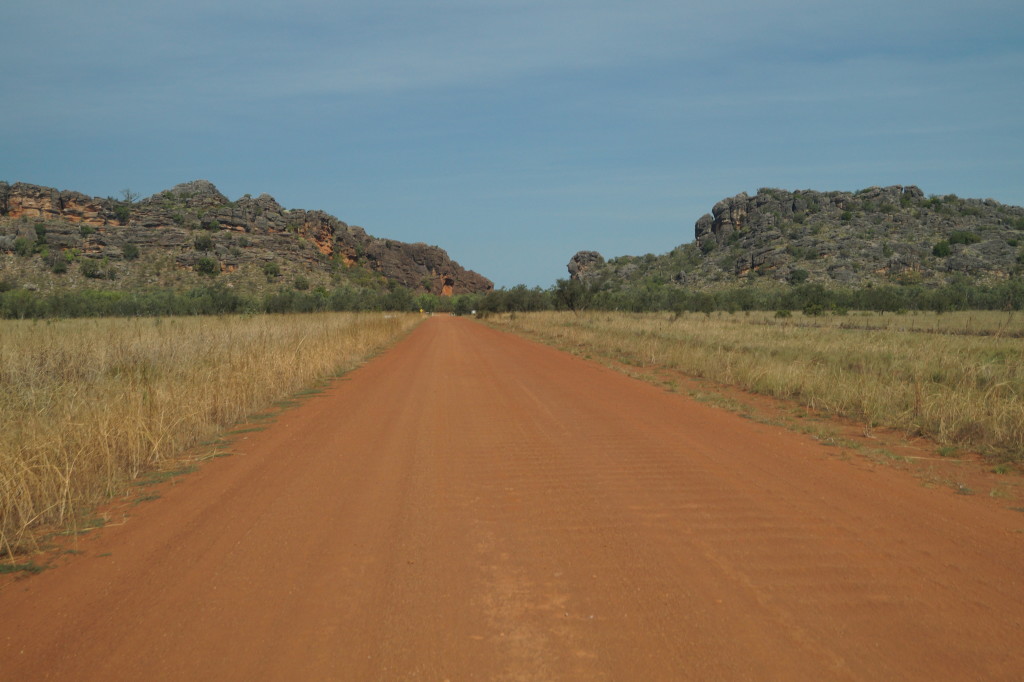
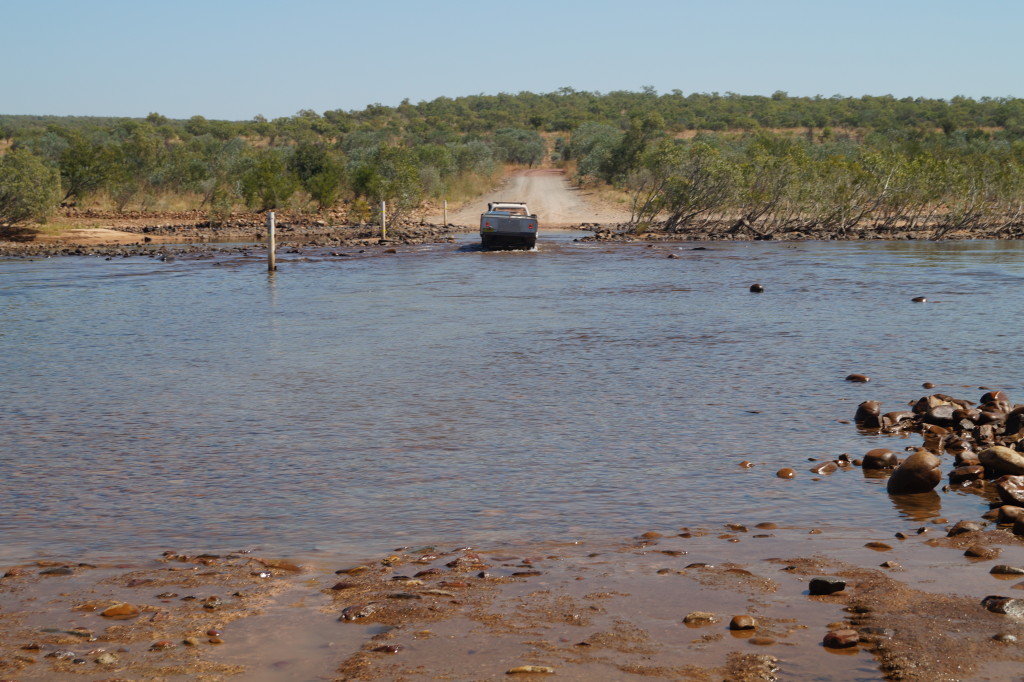
Corrugations are the undoing of many vehicles on dirt roads, the unrelating vibrations rattle your teeth and literally shake your vehicle to pieces underneath you. They are little bumps like waves in the road, regularly spaced about a foot apart. They build up over time as many vehicles pass by, each tyre pushing a little more dirt onto each pile.
In late May, a month into the Dry, the temperatures are hot hitting 38 degrees. The 4WD only Gibb River Road is many off-roaders dream destination. Our guidebook calls it "one of Australia's wildest outback experiences." Actually we thought the road wasn't as bad as all that, the road was pretty flat and straight. However we did manage to shred a tyre and break 3 disc-brake covers! So maybe the truck didn't find it so easy after all.
The road runs alongside some beautiful red rock escarpments filled with waterfalls running into gorges. Many of them have shady waterholes but this being Australia some of the most enticing spots are off limits due to crocs. Both freshies (freshwater crocodiles) and salties (saltwater crocodiles) can be found in the Kimberleys. Freshies are harmless unless provoked but the salties must be completely avoided. In the past couple of weeks we've read of two people being taken by salties in places we have been in the past 2 months, one near Darwin and one in the Daintree. There are very croc aware here, checking at the start of each season and relocating any. Big signs are erected warning people if there is any possibility of salties. However there were several gorges where we could have cooling swims underneath waterfalls. The other bonus was that although it was stinking hot it cooled down at night and there wasn't the draining humidity that tested our tempers in the Top End.
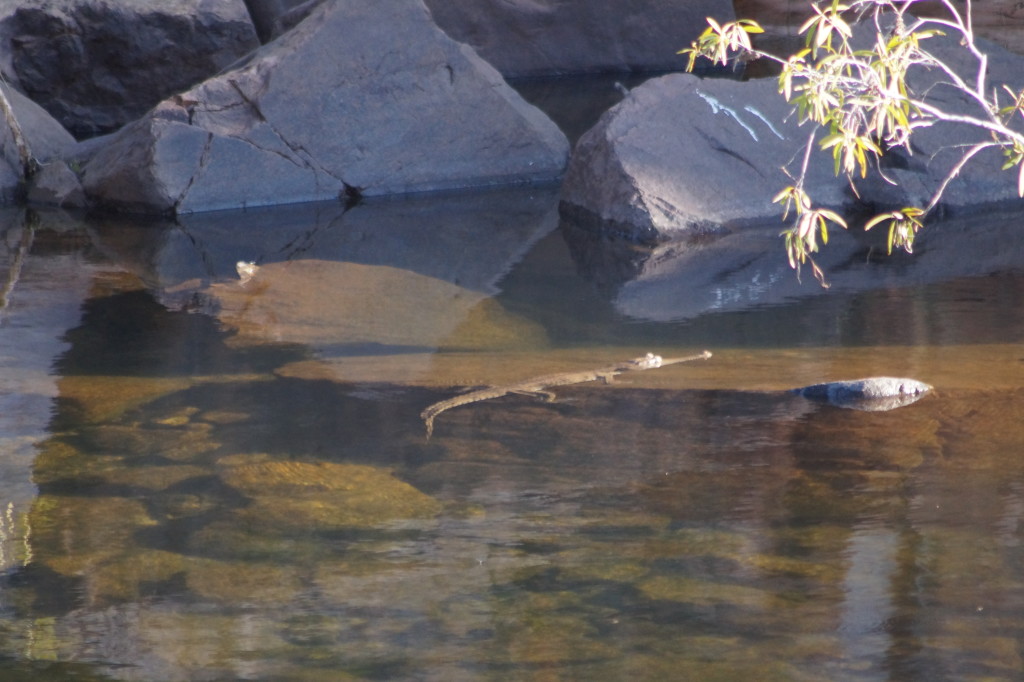
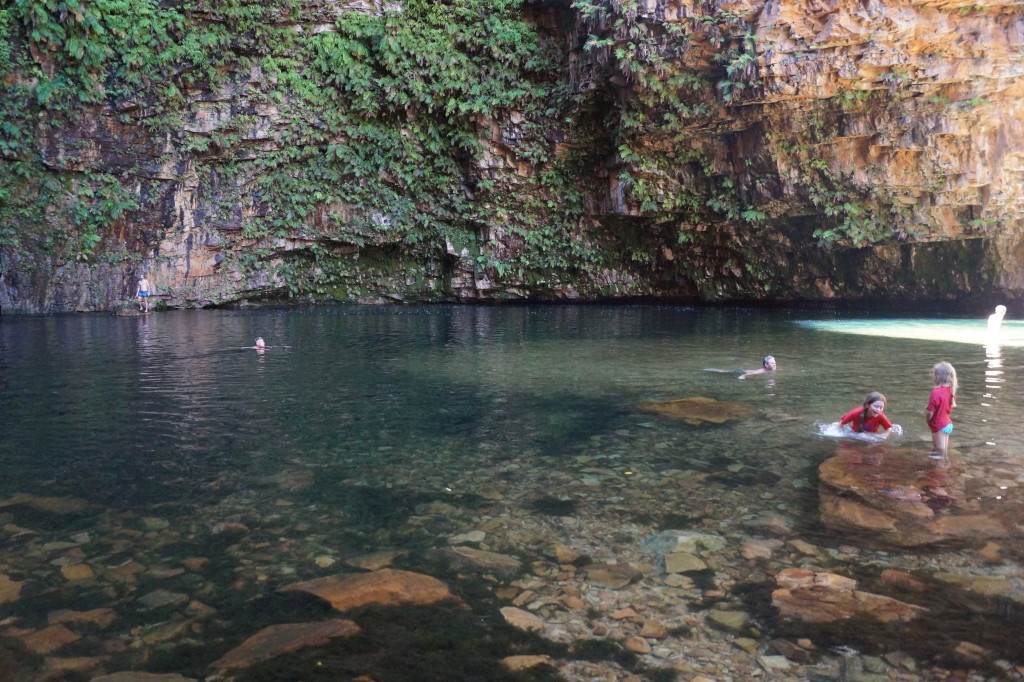
Our first few nights we camped at El Questro and Home Valley, two stations that have found tourists more profitable than cows. Although very remote, at this time of the year it is very popular so the campsites were busy. El Questro has several amazing gorges, our favourite was Emma Gorge with its almost circular canyon around us. The waterfall plunged over the walls on one side while droplets constantly dripped off the ferns all around the sides. After the sweaty walk in we cooled off in the crystal clear waters, when the goosebumps started we swam to one side where warm mineral waters bubbled out from the rocks. Elsewhere on the more than a million acre property, we wallowed in shallow pools while warm spring waters trickled past. Surrounded by Pandanus palms it was a beautiful place to bird watch in the early morning.
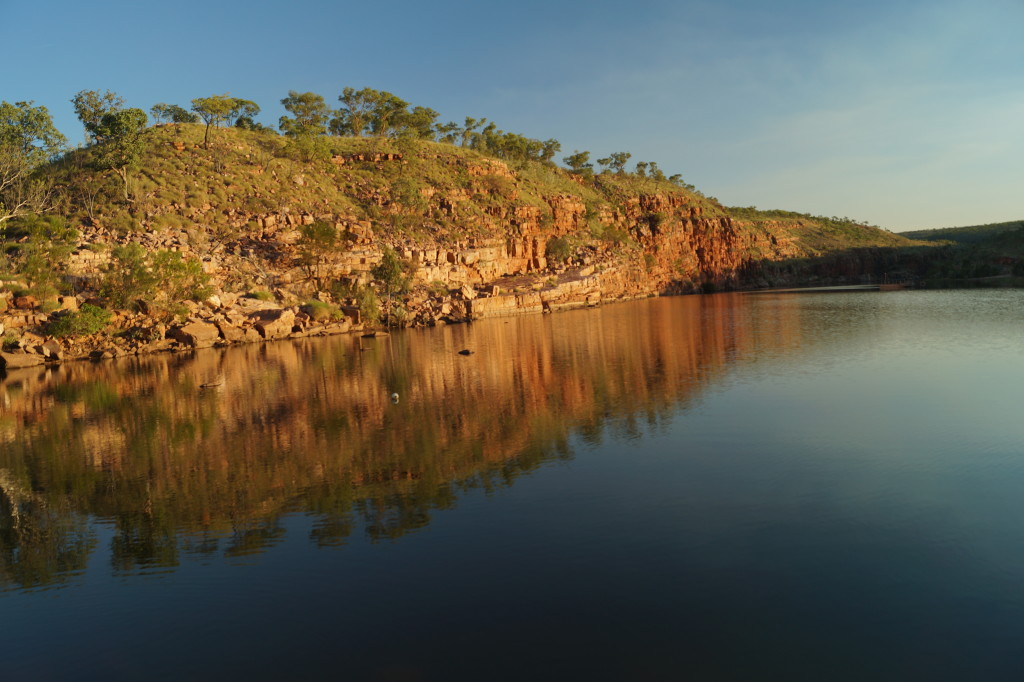
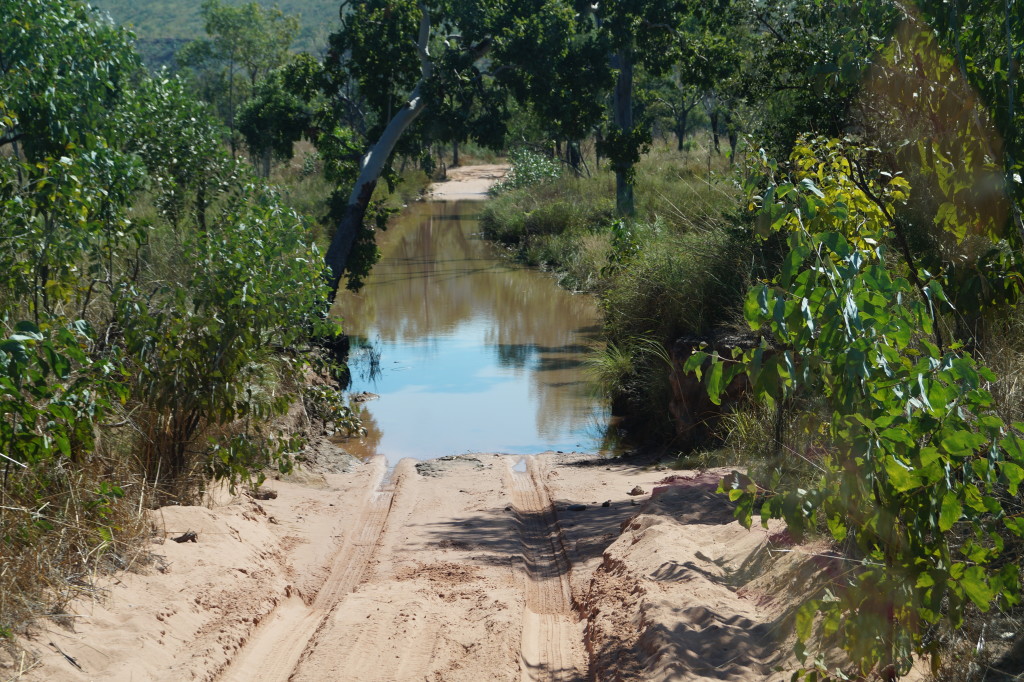
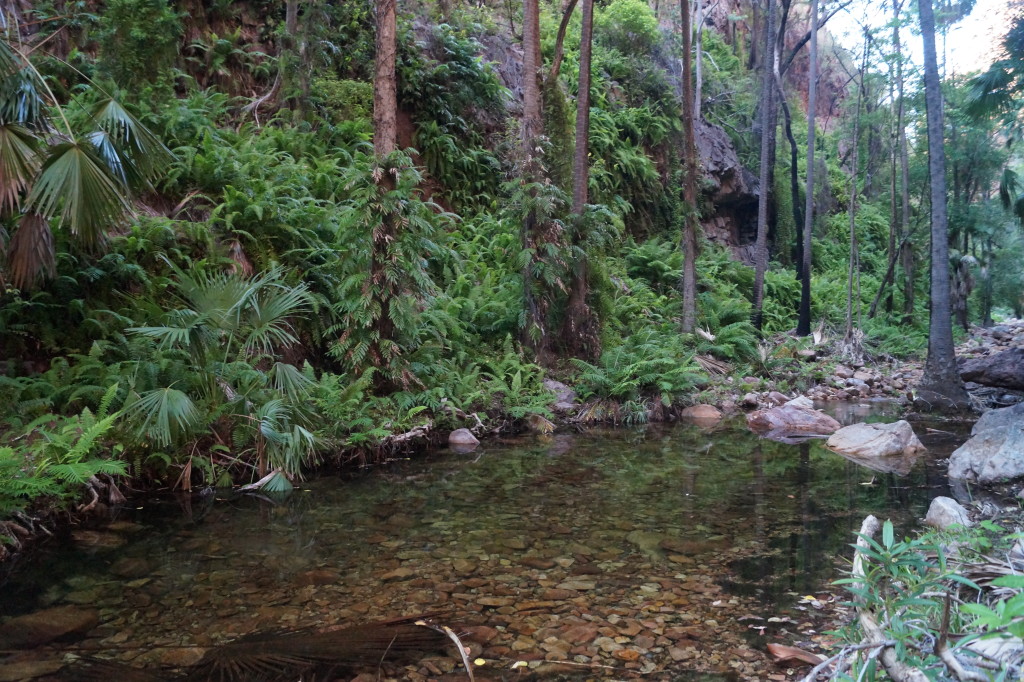
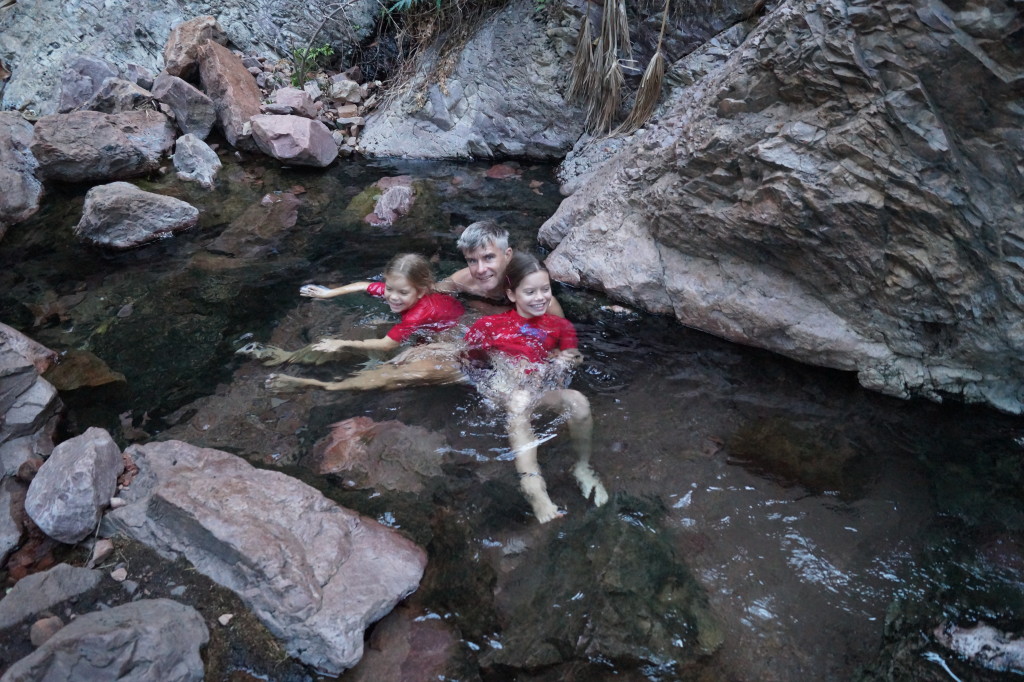
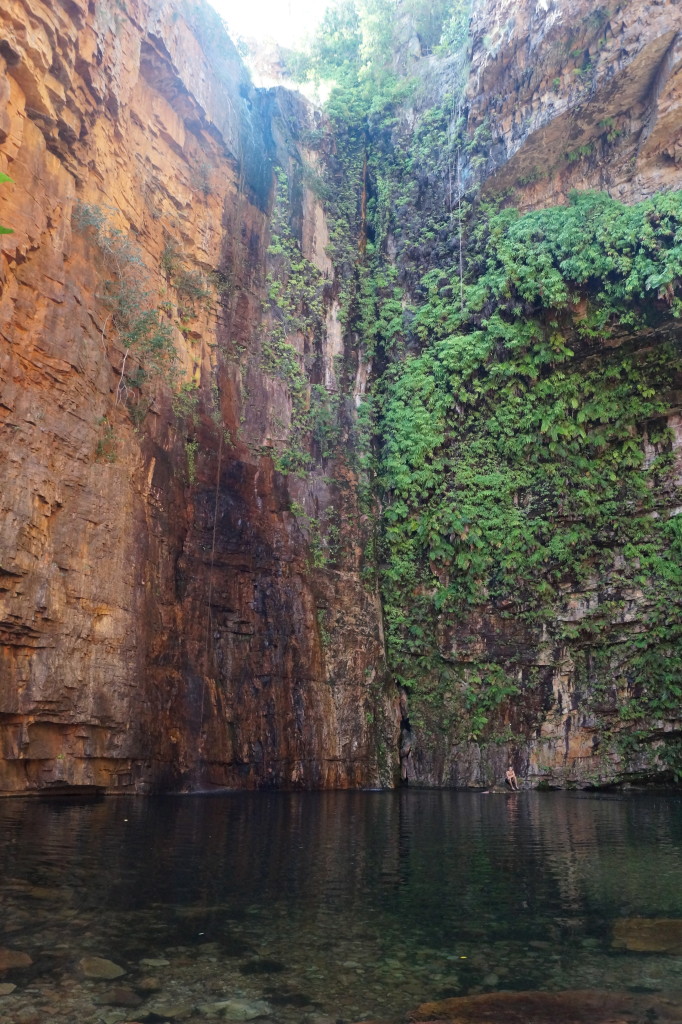
At Home Valley we decided to experience the Kimberleys from a new perspective, the girls and I on horseback and Steve by helicopter. Giant baramundi fish can be found in the rivers but the best spots are pretty inaccessible, so Steve decided to try his luck at heli-fishing. He loved the flight over the plains with the red sandstone escarpment in the distance. There are laws about the size of catch you can keep, only fish between 50-80cm can be taken. All baramundi start life as males but change sex when they get to a certain size. Steve was happy with his 5 catches but unfortunately they were too small to take. However one of the other fishermen caught a perfect sized one and he invited us all to share it in the restaurant that night.
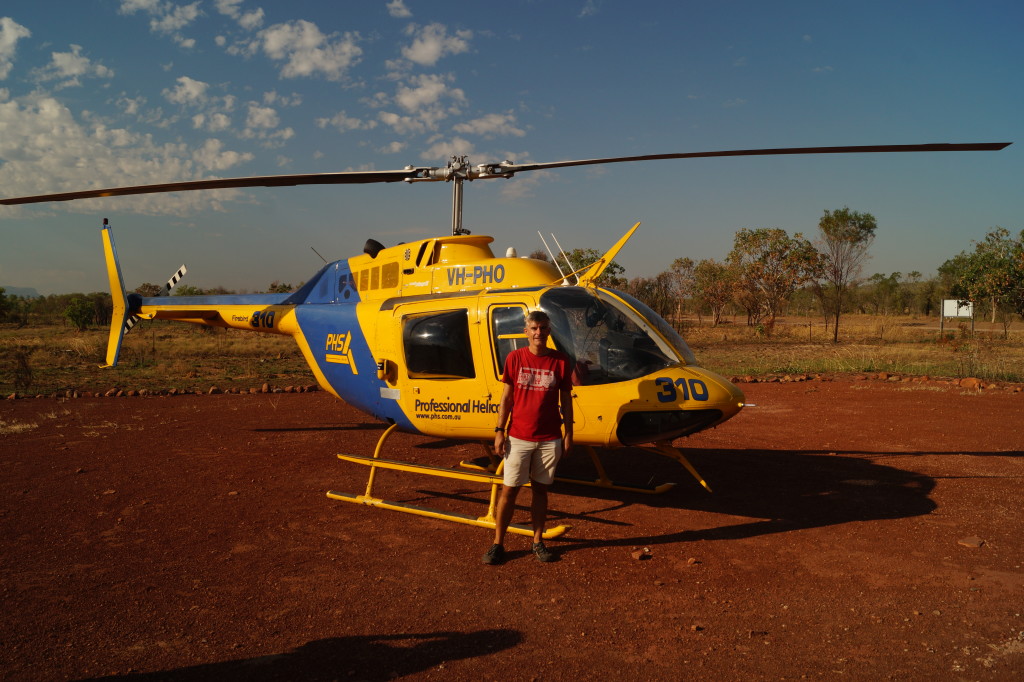
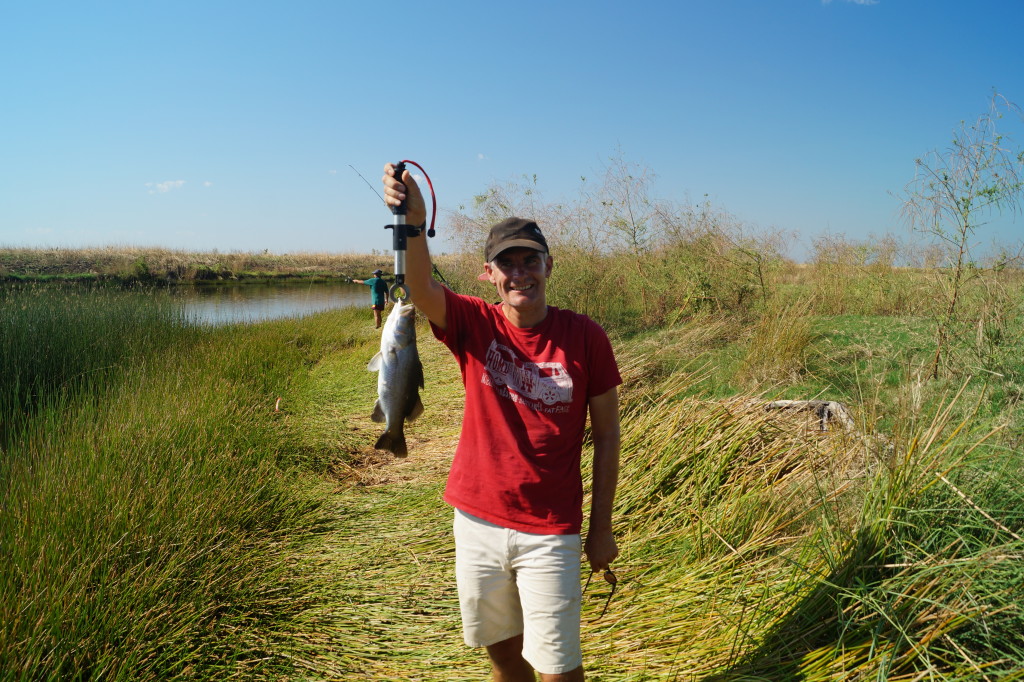
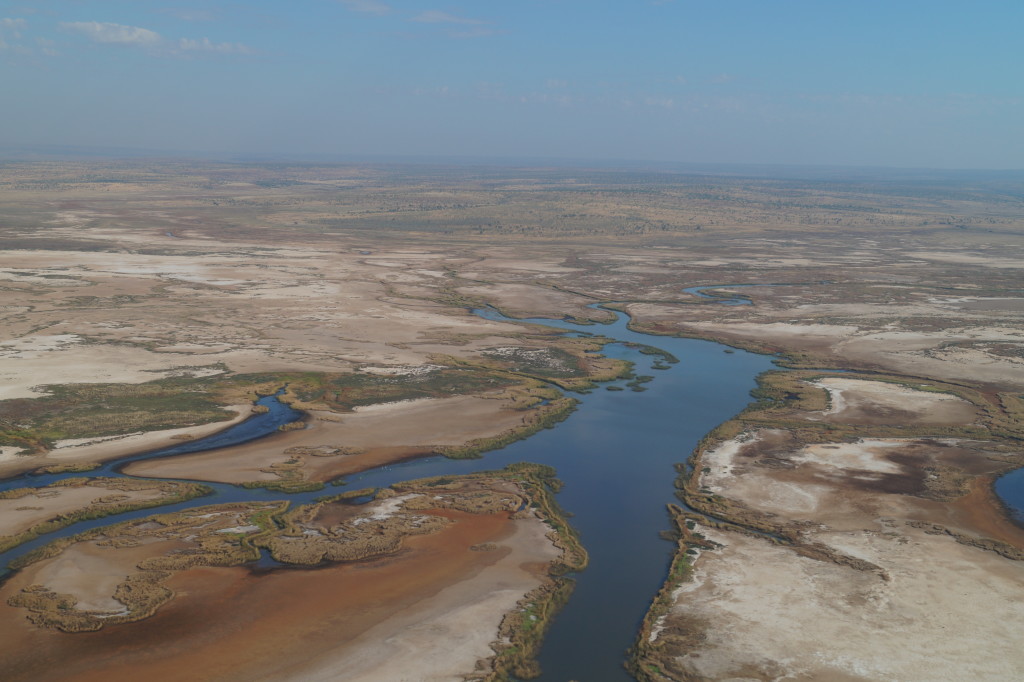
Alisha and I loved our ride to an old stockmen's camp in the early morning, as huge long-horned bulls watched us pass by. Thankfully our trusty steeds were very used to cattle and walking through creeks, so it was a relaxing ride. Lucy was too young to do the big ride but got a chance to do two shorter children's rides instead.
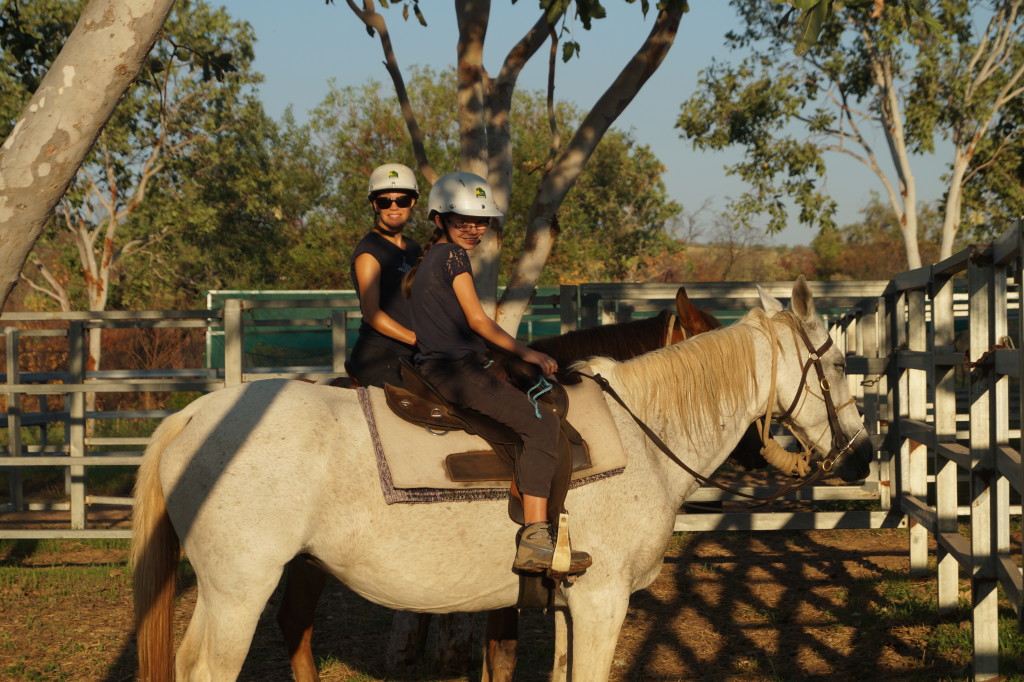
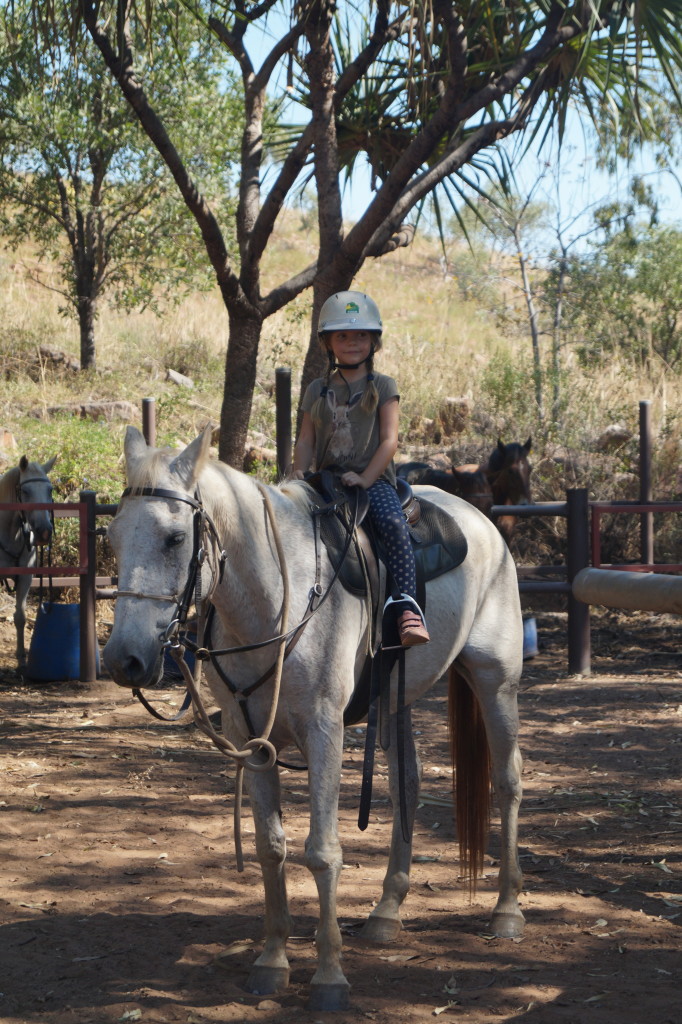
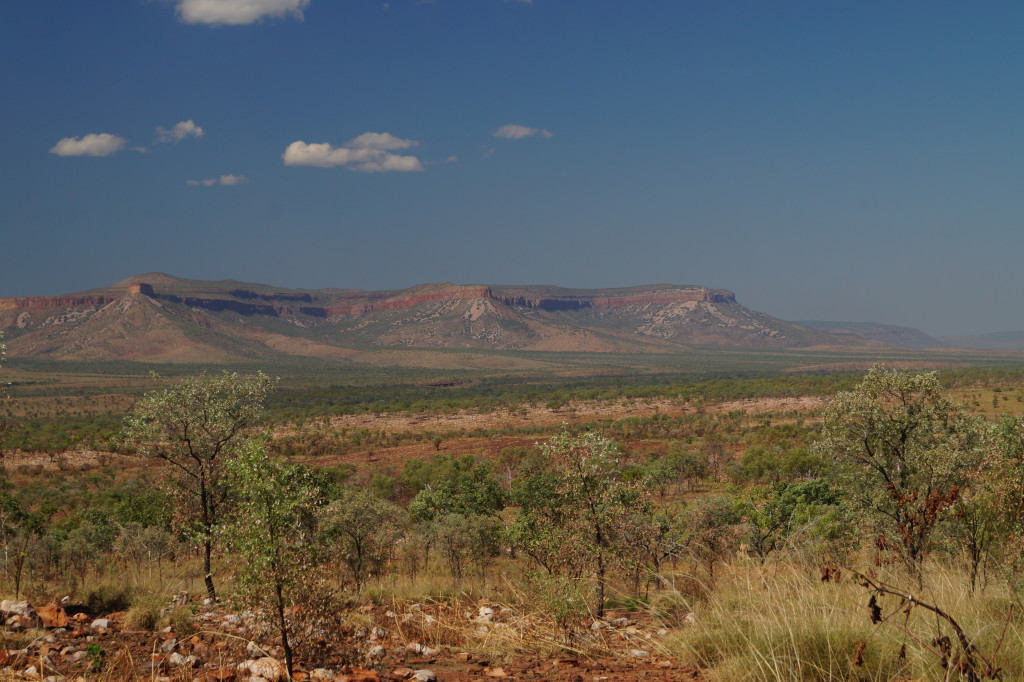
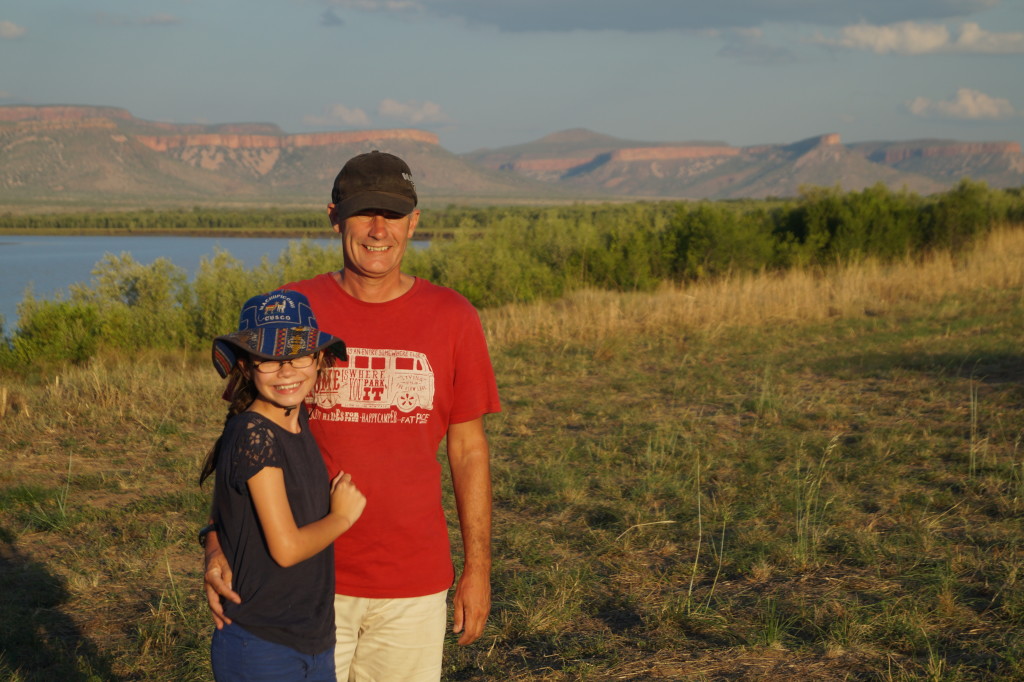
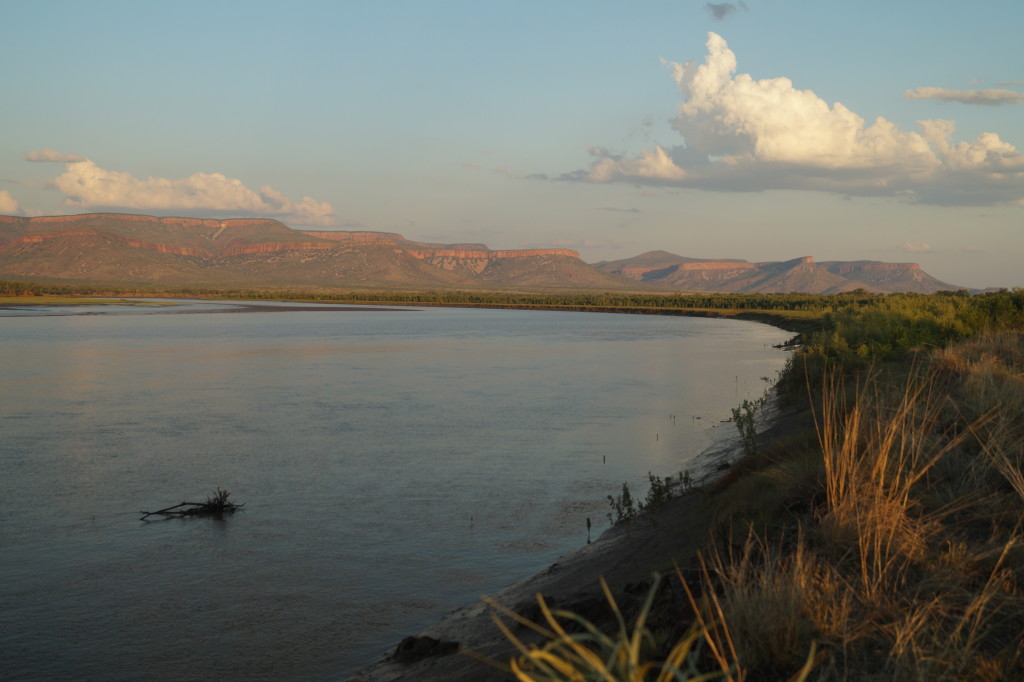
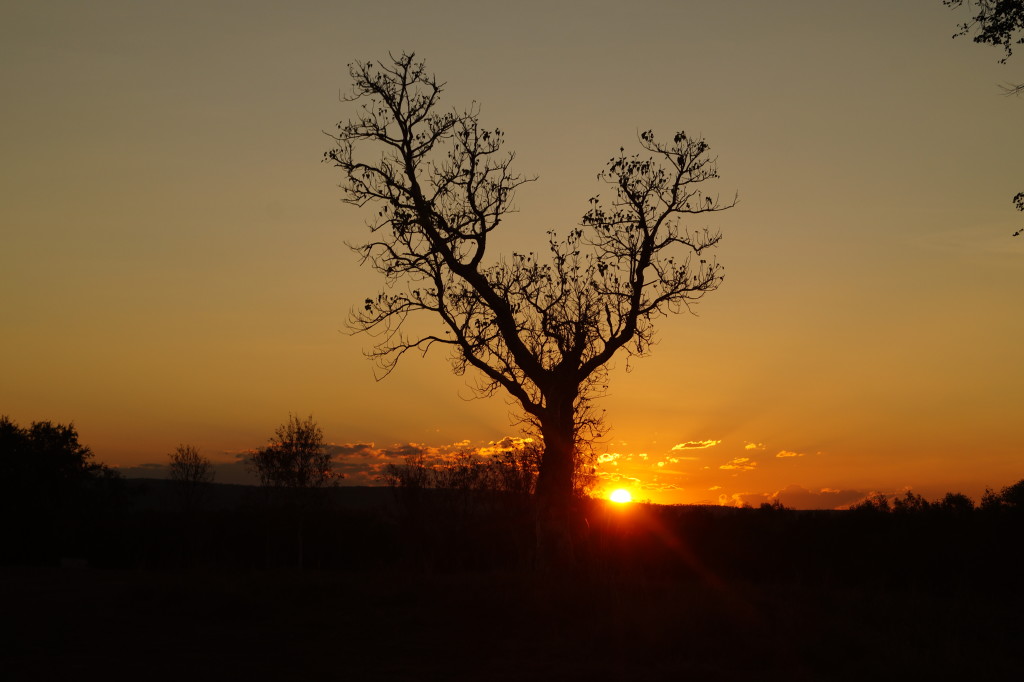
Almost every night the girls and I would work on out latest project for school, picking out the constellations in the clear night skies.
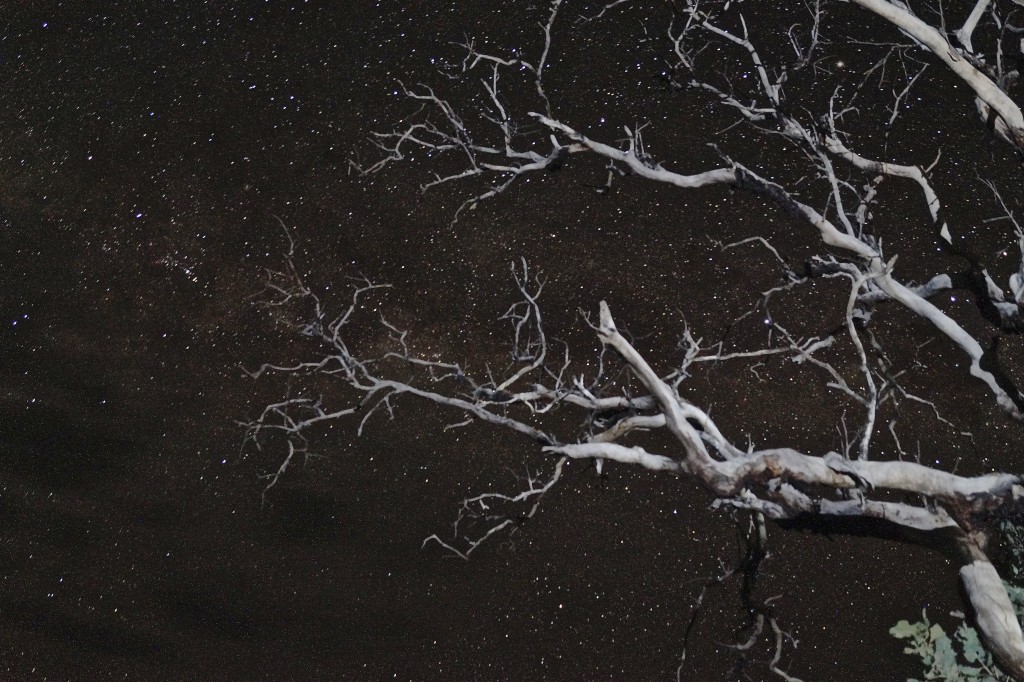
A few weeks ago back in Alice, I wrote in the blog about our worries about our deteriorating tyre conditions. After all the problems we had in South America; the 2 week wait we had in Punta Arenas in Chile; and the expense of getting new ones air freighted in, we made advanced tyre plans for Austalia. When we arrived 8 months ago we found out that there were very few of the Michelin tyres we need in the country. We found 6 and purchased them but left them at the warehouse. The thought was that at the end of our Australian loop we would have a complete exchange and be ready for our drive through Asia. Unfortunately for us the last bit of our loop is on some of the roughest roads. The tyres should be good for about 60,000km but 5000km short of that, in the middle of absolutely nowhere, the back left one completely shredded. We weren't driving fast and so it wasn't scary but we couldn't work out what the caused it to completely break up.
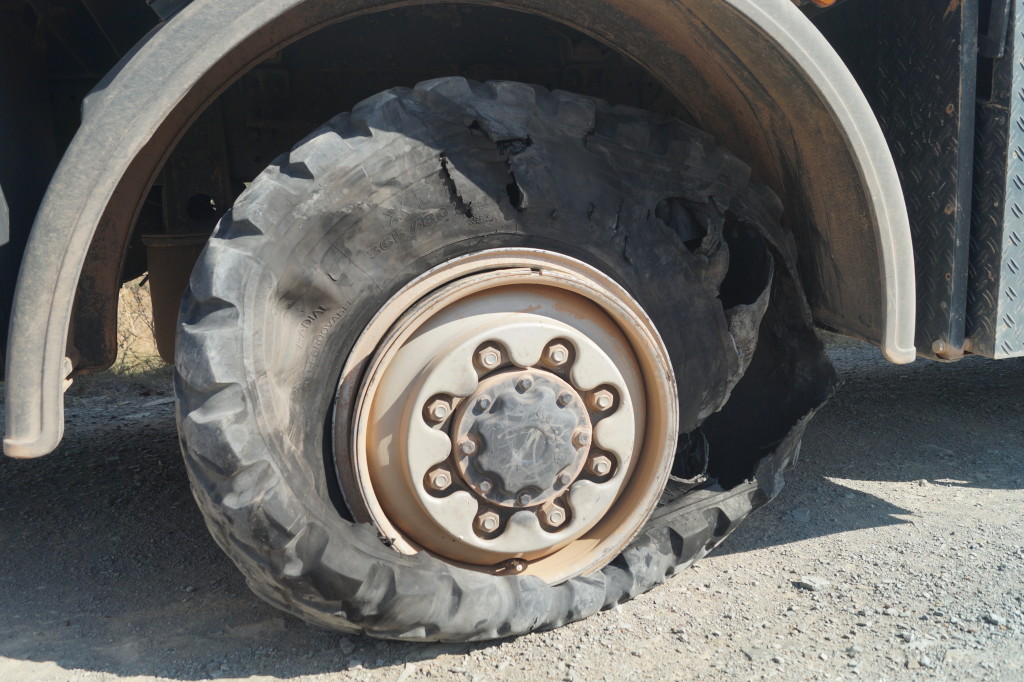
We set to work in the searing afternoon heat, with no shade changing the 120kg tyre wasn't easy. Getting the spare tyre off of the mount on the back of the truck actually takes longer than changing the wheel. We've got it down to a fine art now and we were both remarkably good humoured about it all. We needed a few seconds help lifting the tyre mount down and back into place. Thankfully people stopped and asked if they could help, just at the right moments. Whatever technique we use the two of us can't lift it back on by ourselves. After 2 hot, sweaty, dusty hours we were done. That afternoon the girls got a lesson in staying healthy in the heat. While Steve and I were fine because we'd kept on downing water while we worked, they had chosen to watch a movie in the hottest part of the truck away from the open windows and fans and hadn't taken a drink. They felt rather peculiar and now understand why I am constantly nagging them to drink. They chirped up again once they had rehydrated. We found a delightful little clearing just for us about 500m down a track for our early night.
The next three nights we stopped at three different gorges: Manning, Bell and Windjana. At Manning the walk started with a 30m swim across a clear still creek, there was a wobbly tinny (metal boat) on a rope but we slung the backpack in it and swam across the pushing the boat. Our wet swimming costumes kept us cool for the 3km walk in the middle of the afternoon, across the rocky, high country hike through spear grass that was taller than me. At the other end was a long gorge with a stunning waterfall at the end. It was a blissfully cool swim and shower under the falls before we turned homewards.
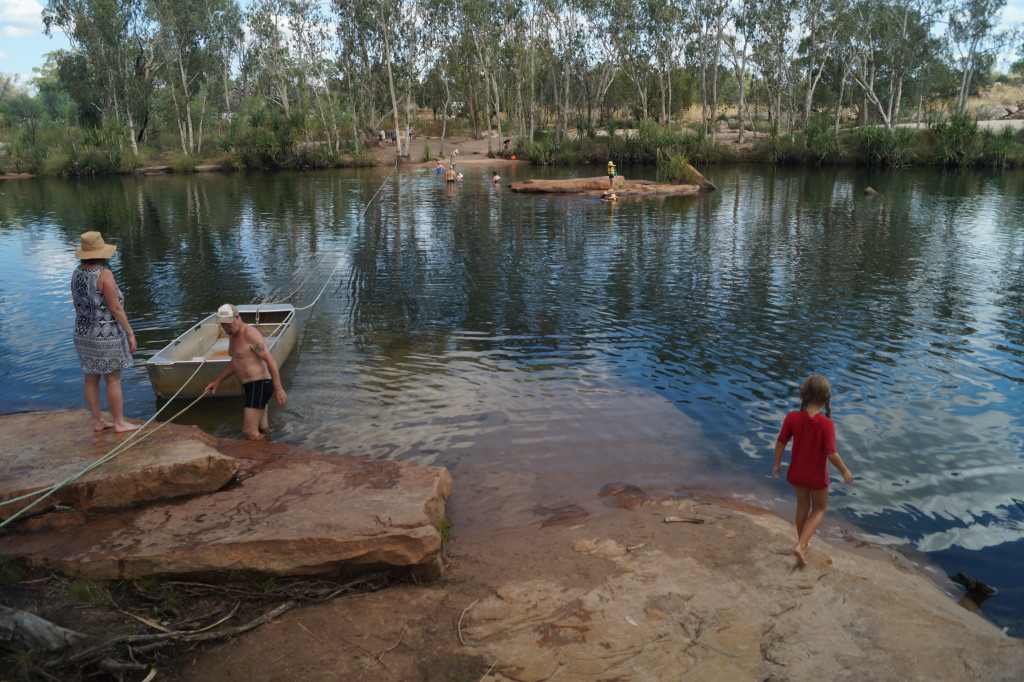
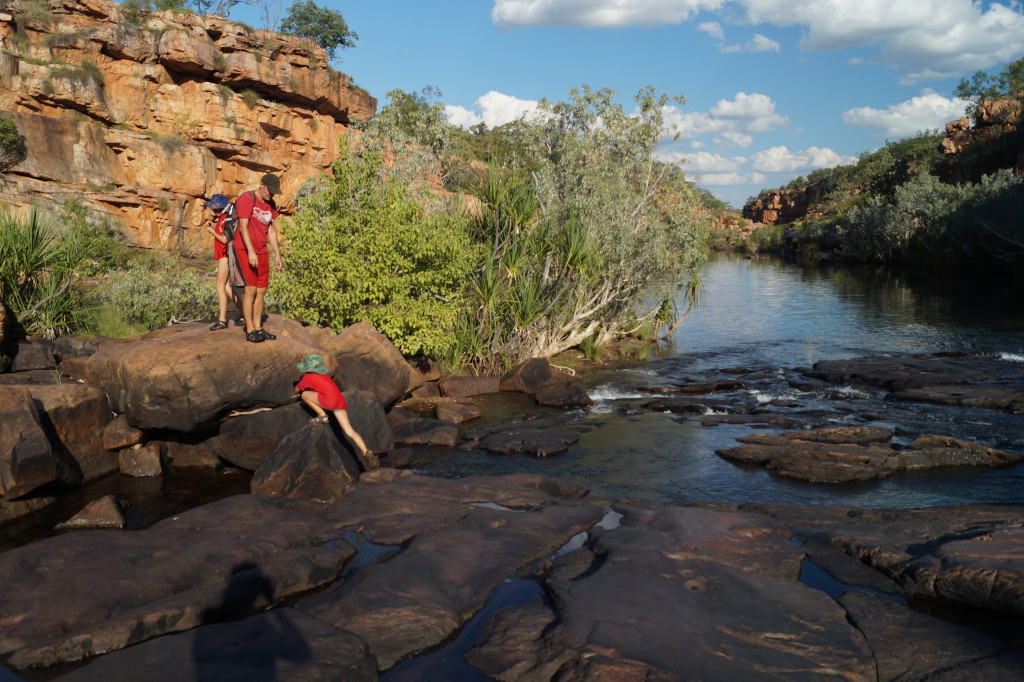
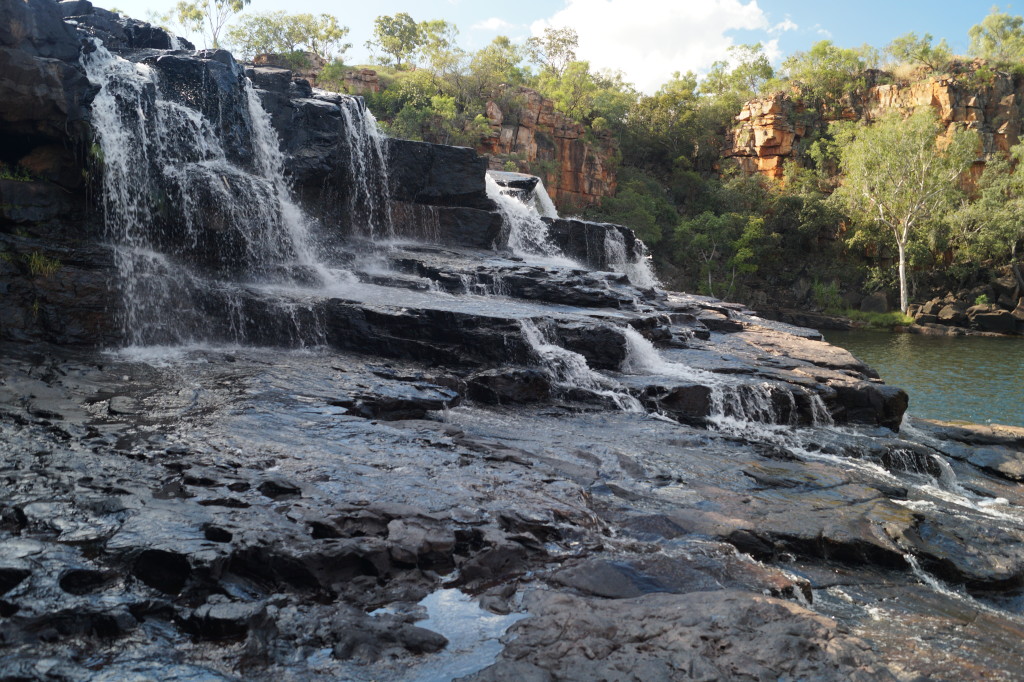
At Bell Gorge we climbed down the gorge's steep walls to swim in the tranquil pools before the falls.
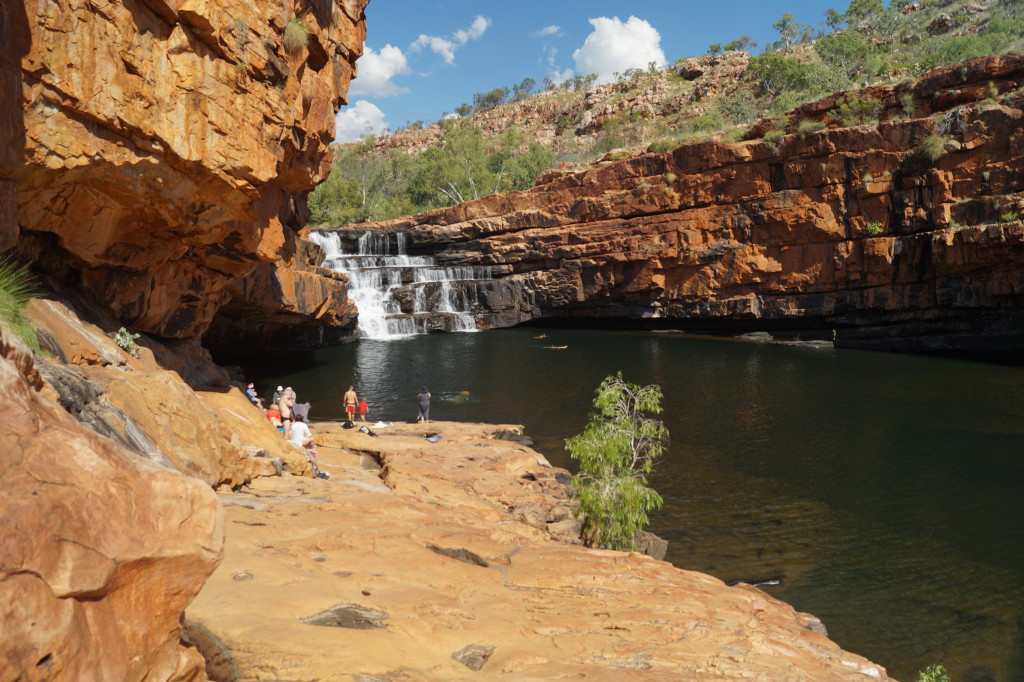
All thoughts of swimming were out at Windjana, as it is considered one of the best places in Australia to see fresh water crocodiles. The limestone walls were laid down 380 million year ago in the Devonian Period by an ancient giant coral reef. A shift in the tectonic plates means that the fossilised reef is now hundreds of kilometres from the sea. It makes an impressive sight with it dark walls rising above the surrounding plains. As we hiked along its deep bottom, we tried to look out for fossilised marine remains. Failing badly, we looked out instead for the live ancestors of ancient beasts and were rewarded with the sight of lots of freshies just hanging out just below the surface. Even at that temperature, having a swim lost all of its appeal.
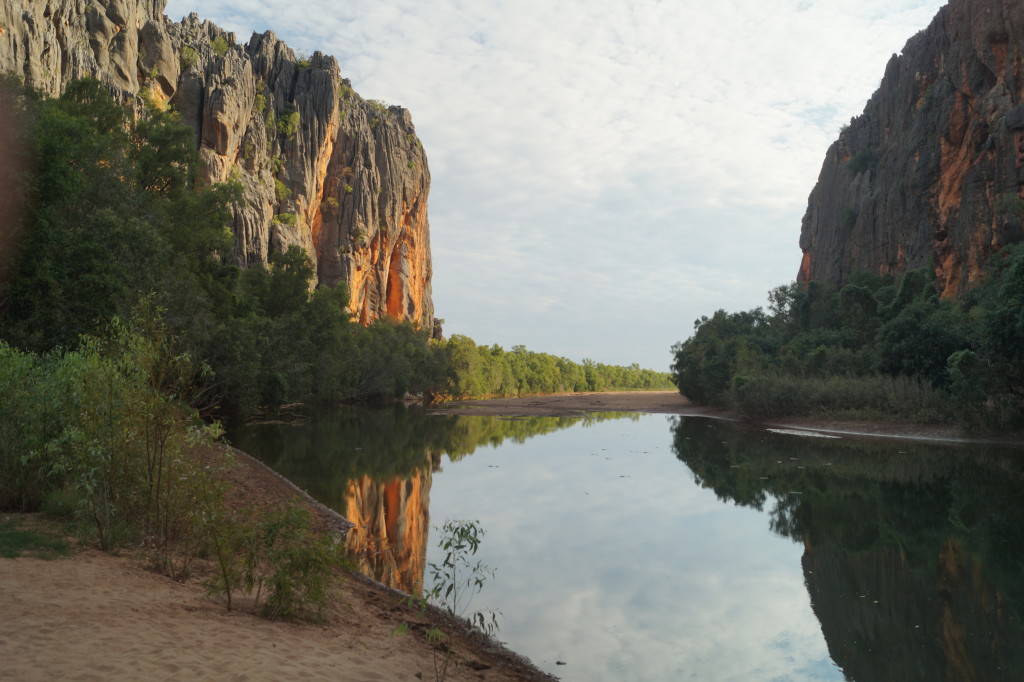
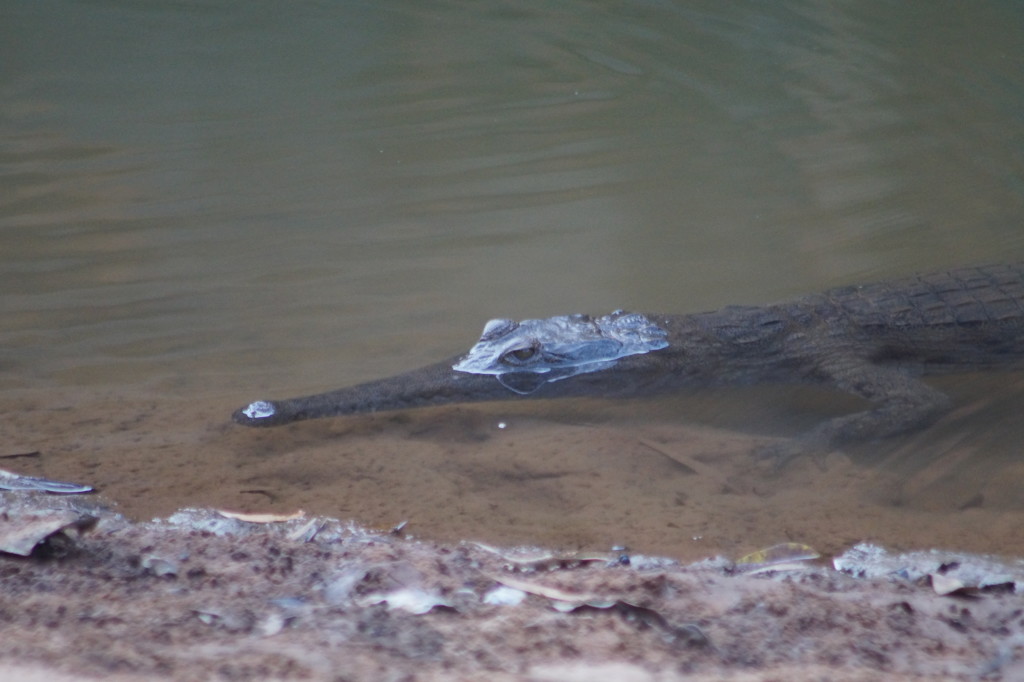

Having left the Gibb River Road it was on the short but horribly corrugated section of the road to Windjana that we discovered what had happened to our disc-brake covers. "Truckie" as he is often affectionally known, is a beautiful piece of precision German engineering. He is able to cope with almost whatever we put in his path - apart from low hanging trees. However he does have one tiny design flaw, the pieces of metal that cover the brakes and stop stones getting into them are incredibly weakly attached. The disc-break covers really have so little function that we've managed thousands of kilometres without them. The first sheared its three tiny attachment points in Panama, we had it re-welded and put back on. Since then we have broken disc-brake covers all over the four continents. They might be simple to weld back together but can cause quite a bit of damage as they break off. Truckie has his own distinctive rattle over any corrugations. "Don't worry about that horrible sound," we say "it's just the disc-brake covers wobbling." It's part of Steve's regular truck check to check they are still in one piece. On this particular nasty set of corrugations we heard the back driver's side cover go, we pulled over to investigate. Thankfully when fully sheared from its 3 bolts, the back wheel doesn't need to be removed to get the broken disc-brake cover off. Checking out the other covers we were surprised to find we had already completely lost the other back cover sometime in the previous 36 hours. We had heard a rattle, checked it out including me running beside the moving truck to investigate the sound, and had found nothing. It must have fallen off sometime after that. The front passenger side one was also found to have sheared one of its three fixed points. It was still attached enough to get to the campsite at Windjana Gorge where we had to remove the front wheel, as the front covers need you to remove the wheel to get it off. However, we waited till the cool of the following morning to attempt that sweaty job.
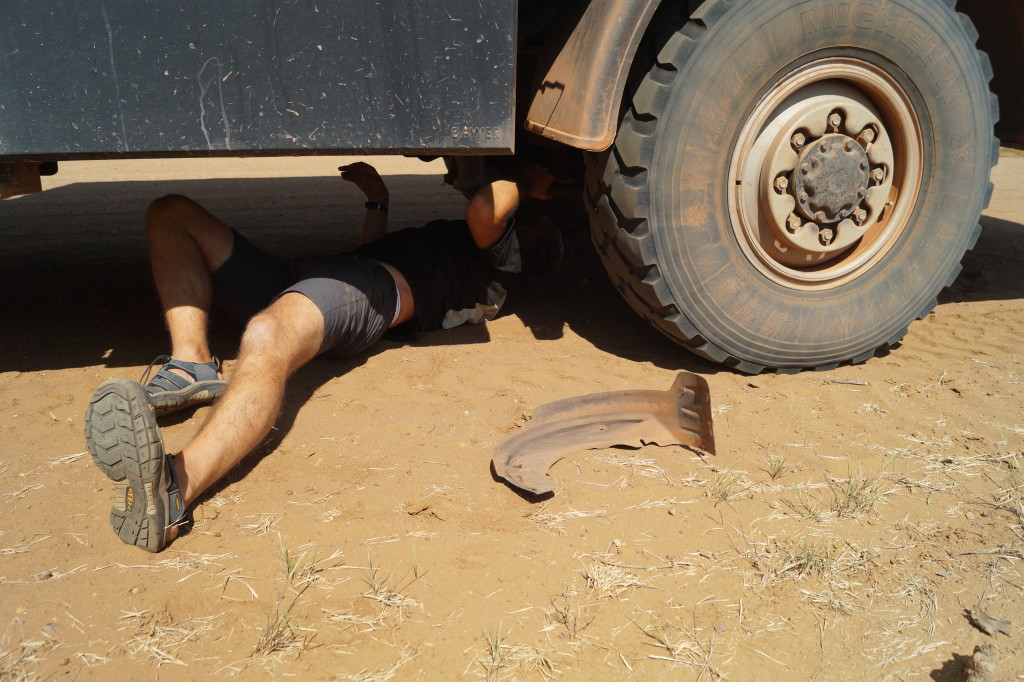
Bats, frogs, fish and freshwater crocs all live in the stream that runs through Tunnel Creek. It was a scramble over the boulders that hide the cave entrance then we waded through the foot deep water. The whole cave runs for a kilometre or so but we gave up after a few hundred metres as our head-torches were no match for the all enveloping pitch black. It was also the thought of what might bump into our feet in the dark waters that got us skipping back quickly to the bright entrance of the cave.
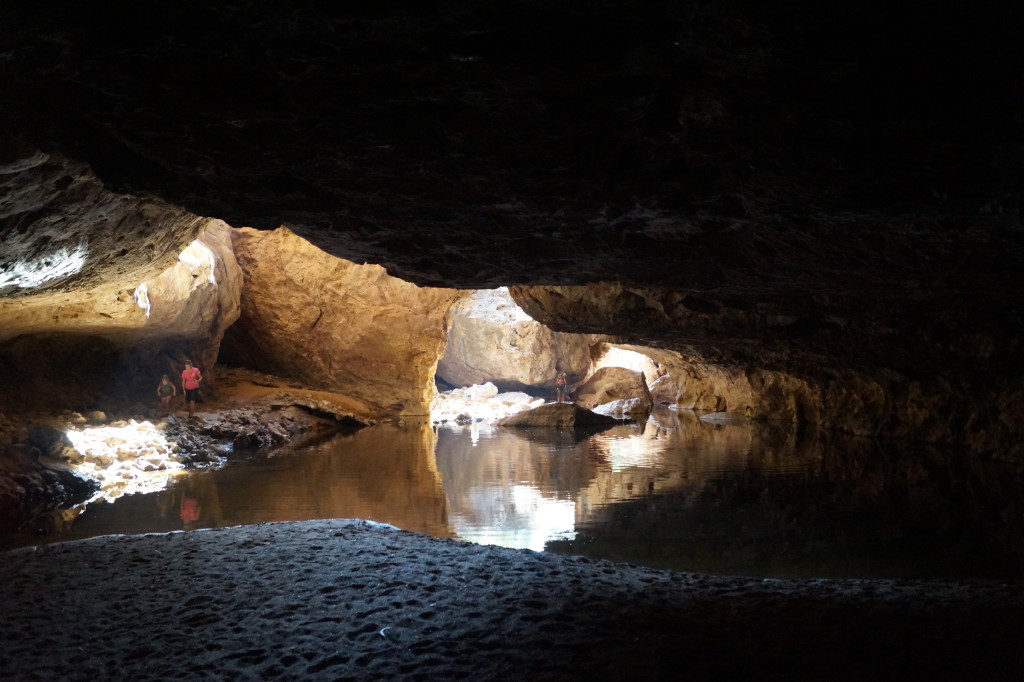
We loved our trip along the Gibb River Road. All those big skies, red escarpments and the sense of remoteness were a real delight. It wasn't quite the solitary experience we had expected as lot of other people on the road enjoying it too but it was beautiful.
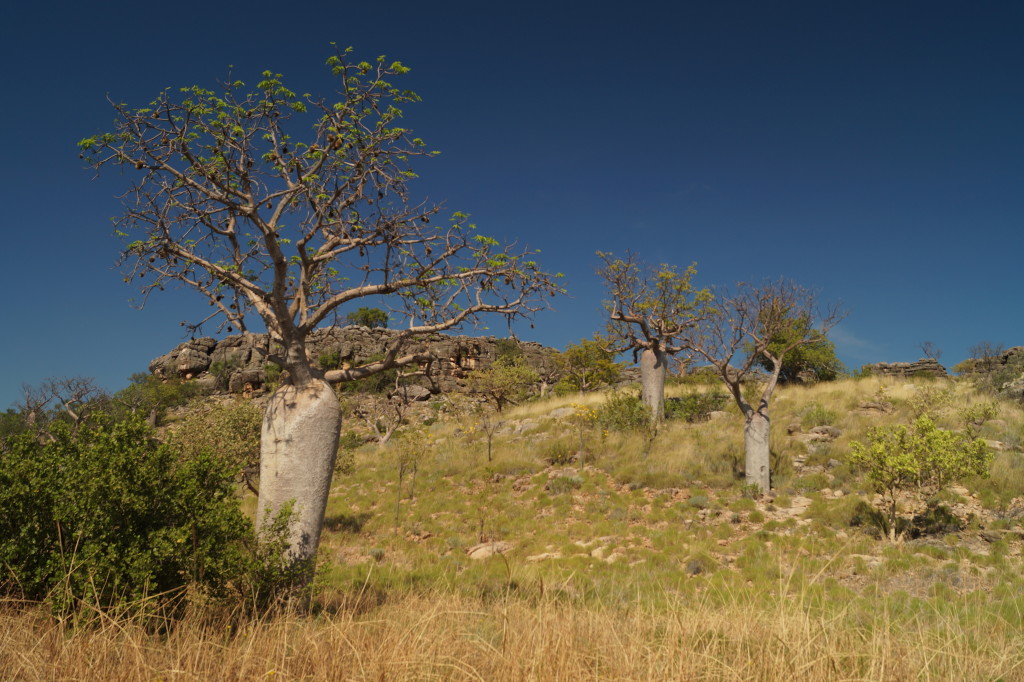

 Corrugations are the undoing of many vehicles on dirt roads, the unrelating vibrations rattle your teeth and literally shake your vehicle to pieces underneath you. They are little bumps like waves in the road, regularly spaced about a foot apart. They build up over time as many vehicles pass by, each tyre pushing a little more dirt onto each pile.
In late May, a month into the Dry, the temperatures are hot hitting 38 degrees. The 4WD only Gibb River Road is many off-roaders dream destination. Our guidebook calls it "one of Australia's wildest outback experiences." Actually we thought the road wasn't as bad as all that, the road was pretty flat and straight. However we did manage to shred a tyre and break 3 disc-brake covers! So maybe the truck didn't find it so easy after all.
The road runs alongside some beautiful red rock escarpments filled with waterfalls running into gorges. Many of them have shady waterholes but this being Australia some of the most enticing spots are off limits due to crocs. Both freshies (freshwater crocodiles) and salties (saltwater crocodiles) can be found in the Kimberleys. Freshies are harmless unless provoked but the salties must be completely avoided. In the past couple of weeks we've read of two people being taken by salties in places we have been in the past 2 months, one near Darwin and one in the Daintree. There are very croc aware here, checking at the start of each season and relocating any. Big signs are erected warning people if there is any possibility of salties. However there were several gorges where we could have cooling swims underneath waterfalls. The other bonus was that although it was stinking hot it cooled down at night and there wasn't the draining humidity that tested our tempers in the Top End.
Corrugations are the undoing of many vehicles on dirt roads, the unrelating vibrations rattle your teeth and literally shake your vehicle to pieces underneath you. They are little bumps like waves in the road, regularly spaced about a foot apart. They build up over time as many vehicles pass by, each tyre pushing a little more dirt onto each pile.
In late May, a month into the Dry, the temperatures are hot hitting 38 degrees. The 4WD only Gibb River Road is many off-roaders dream destination. Our guidebook calls it "one of Australia's wildest outback experiences." Actually we thought the road wasn't as bad as all that, the road was pretty flat and straight. However we did manage to shred a tyre and break 3 disc-brake covers! So maybe the truck didn't find it so easy after all.
The road runs alongside some beautiful red rock escarpments filled with waterfalls running into gorges. Many of them have shady waterholes but this being Australia some of the most enticing spots are off limits due to crocs. Both freshies (freshwater crocodiles) and salties (saltwater crocodiles) can be found in the Kimberleys. Freshies are harmless unless provoked but the salties must be completely avoided. In the past couple of weeks we've read of two people being taken by salties in places we have been in the past 2 months, one near Darwin and one in the Daintree. There are very croc aware here, checking at the start of each season and relocating any. Big signs are erected warning people if there is any possibility of salties. However there were several gorges where we could have cooling swims underneath waterfalls. The other bonus was that although it was stinking hot it cooled down at night and there wasn't the draining humidity that tested our tempers in the Top End.

 Our first few nights we camped at El Questro and Home Valley, two stations that have found tourists more profitable than cows. Although very remote, at this time of the year it is very popular so the campsites were busy. El Questro has several amazing gorges, our favourite was Emma Gorge with its almost circular canyon around us. The waterfall plunged over the walls on one side while droplets constantly dripped off the ferns all around the sides. After the sweaty walk in we cooled off in the crystal clear waters, when the goosebumps started we swam to one side where warm mineral waters bubbled out from the rocks. Elsewhere on the more than a million acre property, we wallowed in shallow pools while warm spring waters trickled past. Surrounded by Pandanus palms it was a beautiful place to bird watch in the early morning.
Our first few nights we camped at El Questro and Home Valley, two stations that have found tourists more profitable than cows. Although very remote, at this time of the year it is very popular so the campsites were busy. El Questro has several amazing gorges, our favourite was Emma Gorge with its almost circular canyon around us. The waterfall plunged over the walls on one side while droplets constantly dripped off the ferns all around the sides. After the sweaty walk in we cooled off in the crystal clear waters, when the goosebumps started we swam to one side where warm mineral waters bubbled out from the rocks. Elsewhere on the more than a million acre property, we wallowed in shallow pools while warm spring waters trickled past. Surrounded by Pandanus palms it was a beautiful place to bird watch in the early morning. 



 At Home Valley we decided to experience the Kimberleys from a new perspective, the girls and I on horseback and Steve by helicopter. Giant baramundi fish can be found in the rivers but the best spots are pretty inaccessible, so Steve decided to try his luck at heli-fishing. He loved the flight over the plains with the red sandstone escarpment in the distance. There are laws about the size of catch you can keep, only fish between 50-80cm can be taken. All baramundi start life as males but change sex when they get to a certain size. Steve was happy with his 5 catches but unfortunately they were too small to take. However one of the other fishermen caught a perfect sized one and he invited us all to share it in the restaurant that night.
At Home Valley we decided to experience the Kimberleys from a new perspective, the girls and I on horseback and Steve by helicopter. Giant baramundi fish can be found in the rivers but the best spots are pretty inaccessible, so Steve decided to try his luck at heli-fishing. He loved the flight over the plains with the red sandstone escarpment in the distance. There are laws about the size of catch you can keep, only fish between 50-80cm can be taken. All baramundi start life as males but change sex when they get to a certain size. Steve was happy with his 5 catches but unfortunately they were too small to take. However one of the other fishermen caught a perfect sized one and he invited us all to share it in the restaurant that night. 

 Alisha and I loved our ride to an old stockmen's camp in the early morning, as huge long-horned bulls watched us pass by. Thankfully our trusty steeds were very used to cattle and walking through creeks, so it was a relaxing ride. Lucy was too young to do the big ride but got a chance to do two shorter children's rides instead.
Alisha and I loved our ride to an old stockmen's camp in the early morning, as huge long-horned bulls watched us pass by. Thankfully our trusty steeds were very used to cattle and walking through creeks, so it was a relaxing ride. Lucy was too young to do the big ride but got a chance to do two shorter children's rides instead.





 Almost every night the girls and I would work on out latest project for school, picking out the constellations in the clear night skies.
Almost every night the girls and I would work on out latest project for school, picking out the constellations in the clear night skies.
 A few weeks ago back in Alice, I wrote in the blog about our worries about our deteriorating tyre conditions. After all the problems we had in South America; the 2 week wait we had in Punta Arenas in Chile; and the expense of getting new ones air freighted in, we made advanced tyre plans for Austalia. When we arrived 8 months ago we found out that there were very few of the Michelin tyres we need in the country. We found 6 and purchased them but left them at the warehouse. The thought was that at the end of our Australian loop we would have a complete exchange and be ready for our drive through Asia. Unfortunately for us the last bit of our loop is on some of the roughest roads. The tyres should be good for about 60,000km but 5000km short of that, in the middle of absolutely nowhere, the back left one completely shredded. We weren't driving fast and so it wasn't scary but we couldn't work out what the caused it to completely break up.
A few weeks ago back in Alice, I wrote in the blog about our worries about our deteriorating tyre conditions. After all the problems we had in South America; the 2 week wait we had in Punta Arenas in Chile; and the expense of getting new ones air freighted in, we made advanced tyre plans for Austalia. When we arrived 8 months ago we found out that there were very few of the Michelin tyres we need in the country. We found 6 and purchased them but left them at the warehouse. The thought was that at the end of our Australian loop we would have a complete exchange and be ready for our drive through Asia. Unfortunately for us the last bit of our loop is on some of the roughest roads. The tyres should be good for about 60,000km but 5000km short of that, in the middle of absolutely nowhere, the back left one completely shredded. We weren't driving fast and so it wasn't scary but we couldn't work out what the caused it to completely break up.  We set to work in the searing afternoon heat, with no shade changing the 120kg tyre wasn't easy. Getting the spare tyre off of the mount on the back of the truck actually takes longer than changing the wheel. We've got it down to a fine art now and we were both remarkably good humoured about it all. We needed a few seconds help lifting the tyre mount down and back into place. Thankfully people stopped and asked if they could help, just at the right moments. Whatever technique we use the two of us can't lift it back on by ourselves. After 2 hot, sweaty, dusty hours we were done. That afternoon the girls got a lesson in staying healthy in the heat. While Steve and I were fine because we'd kept on downing water while we worked, they had chosen to watch a movie in the hottest part of the truck away from the open windows and fans and hadn't taken a drink. They felt rather peculiar and now understand why I am constantly nagging them to drink. They chirped up again once they had rehydrated. We found a delightful little clearing just for us about 500m down a track for our early night.
The next three nights we stopped at three different gorges: Manning, Bell and Windjana. At Manning the walk started with a 30m swim across a clear still creek, there was a wobbly tinny (metal boat) on a rope but we slung the backpack in it and swam across the pushing the boat. Our wet swimming costumes kept us cool for the 3km walk in the middle of the afternoon, across the rocky, high country hike through spear grass that was taller than me. At the other end was a long gorge with a stunning waterfall at the end. It was a blissfully cool swim and shower under the falls before we turned homewards.
We set to work in the searing afternoon heat, with no shade changing the 120kg tyre wasn't easy. Getting the spare tyre off of the mount on the back of the truck actually takes longer than changing the wheel. We've got it down to a fine art now and we were both remarkably good humoured about it all. We needed a few seconds help lifting the tyre mount down and back into place. Thankfully people stopped and asked if they could help, just at the right moments. Whatever technique we use the two of us can't lift it back on by ourselves. After 2 hot, sweaty, dusty hours we were done. That afternoon the girls got a lesson in staying healthy in the heat. While Steve and I were fine because we'd kept on downing water while we worked, they had chosen to watch a movie in the hottest part of the truck away from the open windows and fans and hadn't taken a drink. They felt rather peculiar and now understand why I am constantly nagging them to drink. They chirped up again once they had rehydrated. We found a delightful little clearing just for us about 500m down a track for our early night.
The next three nights we stopped at three different gorges: Manning, Bell and Windjana. At Manning the walk started with a 30m swim across a clear still creek, there was a wobbly tinny (metal boat) on a rope but we slung the backpack in it and swam across the pushing the boat. Our wet swimming costumes kept us cool for the 3km walk in the middle of the afternoon, across the rocky, high country hike through spear grass that was taller than me. At the other end was a long gorge with a stunning waterfall at the end. It was a blissfully cool swim and shower under the falls before we turned homewards.


 At Bell Gorge we climbed down the gorge's steep walls to swim in the tranquil pools before the falls.
At Bell Gorge we climbed down the gorge's steep walls to swim in the tranquil pools before the falls.  All thoughts of swimming were out at Windjana, as it is considered one of the best places in Australia to see fresh water crocodiles. The limestone walls were laid down 380 million year ago in the Devonian Period by an ancient giant coral reef. A shift in the tectonic plates means that the fossilised reef is now hundreds of kilometres from the sea. It makes an impressive sight with it dark walls rising above the surrounding plains. As we hiked along its deep bottom, we tried to look out for fossilised marine remains. Failing badly, we looked out instead for the live ancestors of ancient beasts and were rewarded with the sight of lots of freshies just hanging out just below the surface. Even at that temperature, having a swim lost all of its appeal.
All thoughts of swimming were out at Windjana, as it is considered one of the best places in Australia to see fresh water crocodiles. The limestone walls were laid down 380 million year ago in the Devonian Period by an ancient giant coral reef. A shift in the tectonic plates means that the fossilised reef is now hundreds of kilometres from the sea. It makes an impressive sight with it dark walls rising above the surrounding plains. As we hiked along its deep bottom, we tried to look out for fossilised marine remains. Failing badly, we looked out instead for the live ancestors of ancient beasts and were rewarded with the sight of lots of freshies just hanging out just below the surface. Even at that temperature, having a swim lost all of its appeal. 

 Having left the Gibb River Road it was on the short but horribly corrugated section of the road to Windjana that we discovered what had happened to our disc-brake covers. "Truckie" as he is often affectionally known, is a beautiful piece of precision German engineering. He is able to cope with almost whatever we put in his path - apart from low hanging trees. However he does have one tiny design flaw, the pieces of metal that cover the brakes and stop stones getting into them are incredibly weakly attached. The disc-break covers really have so little function that we've managed thousands of kilometres without them. The first sheared its three tiny attachment points in Panama, we had it re-welded and put back on. Since then we have broken disc-brake covers all over the four continents. They might be simple to weld back together but can cause quite a bit of damage as they break off. Truckie has his own distinctive rattle over any corrugations. "Don't worry about that horrible sound," we say "it's just the disc-brake covers wobbling." It's part of Steve's regular truck check to check they are still in one piece. On this particular nasty set of corrugations we heard the back driver's side cover go, we pulled over to investigate. Thankfully when fully sheared from its 3 bolts, the back wheel doesn't need to be removed to get the broken disc-brake cover off. Checking out the other covers we were surprised to find we had already completely lost the other back cover sometime in the previous 36 hours. We had heard a rattle, checked it out including me running beside the moving truck to investigate the sound, and had found nothing. It must have fallen off sometime after that. The front passenger side one was also found to have sheared one of its three fixed points. It was still attached enough to get to the campsite at Windjana Gorge where we had to remove the front wheel, as the front covers need you to remove the wheel to get it off. However, we waited till the cool of the following morning to attempt that sweaty job.
Having left the Gibb River Road it was on the short but horribly corrugated section of the road to Windjana that we discovered what had happened to our disc-brake covers. "Truckie" as he is often affectionally known, is a beautiful piece of precision German engineering. He is able to cope with almost whatever we put in his path - apart from low hanging trees. However he does have one tiny design flaw, the pieces of metal that cover the brakes and stop stones getting into them are incredibly weakly attached. The disc-break covers really have so little function that we've managed thousands of kilometres without them. The first sheared its three tiny attachment points in Panama, we had it re-welded and put back on. Since then we have broken disc-brake covers all over the four continents. They might be simple to weld back together but can cause quite a bit of damage as they break off. Truckie has his own distinctive rattle over any corrugations. "Don't worry about that horrible sound," we say "it's just the disc-brake covers wobbling." It's part of Steve's regular truck check to check they are still in one piece. On this particular nasty set of corrugations we heard the back driver's side cover go, we pulled over to investigate. Thankfully when fully sheared from its 3 bolts, the back wheel doesn't need to be removed to get the broken disc-brake cover off. Checking out the other covers we were surprised to find we had already completely lost the other back cover sometime in the previous 36 hours. We had heard a rattle, checked it out including me running beside the moving truck to investigate the sound, and had found nothing. It must have fallen off sometime after that. The front passenger side one was also found to have sheared one of its three fixed points. It was still attached enough to get to the campsite at Windjana Gorge where we had to remove the front wheel, as the front covers need you to remove the wheel to get it off. However, we waited till the cool of the following morning to attempt that sweaty job.  Bats, frogs, fish and freshwater crocs all live in the stream that runs through Tunnel Creek. It was a scramble over the boulders that hide the cave entrance then we waded through the foot deep water. The whole cave runs for a kilometre or so but we gave up after a few hundred metres as our head-torches were no match for the all enveloping pitch black. It was also the thought of what might bump into our feet in the dark waters that got us skipping back quickly to the bright entrance of the cave.
Bats, frogs, fish and freshwater crocs all live in the stream that runs through Tunnel Creek. It was a scramble over the boulders that hide the cave entrance then we waded through the foot deep water. The whole cave runs for a kilometre or so but we gave up after a few hundred metres as our head-torches were no match for the all enveloping pitch black. It was also the thought of what might bump into our feet in the dark waters that got us skipping back quickly to the bright entrance of the cave.  We loved our trip along the Gibb River Road. All those big skies, red escarpments and the sense of remoteness were a real delight. It wasn't quite the solitary experience we had expected as lot of other people on the road enjoying it too but it was beautiful.
We loved our trip along the Gibb River Road. All those big skies, red escarpments and the sense of remoteness were a real delight. It wasn't quite the solitary experience we had expected as lot of other people on the road enjoying it too but it was beautiful.

